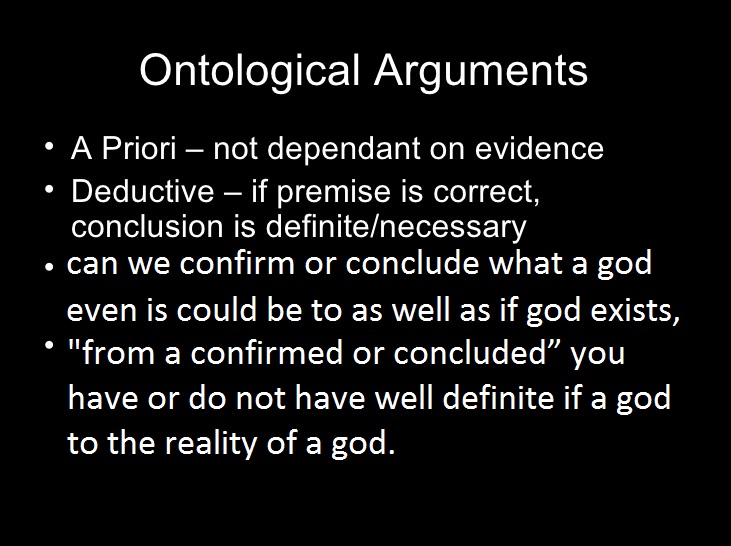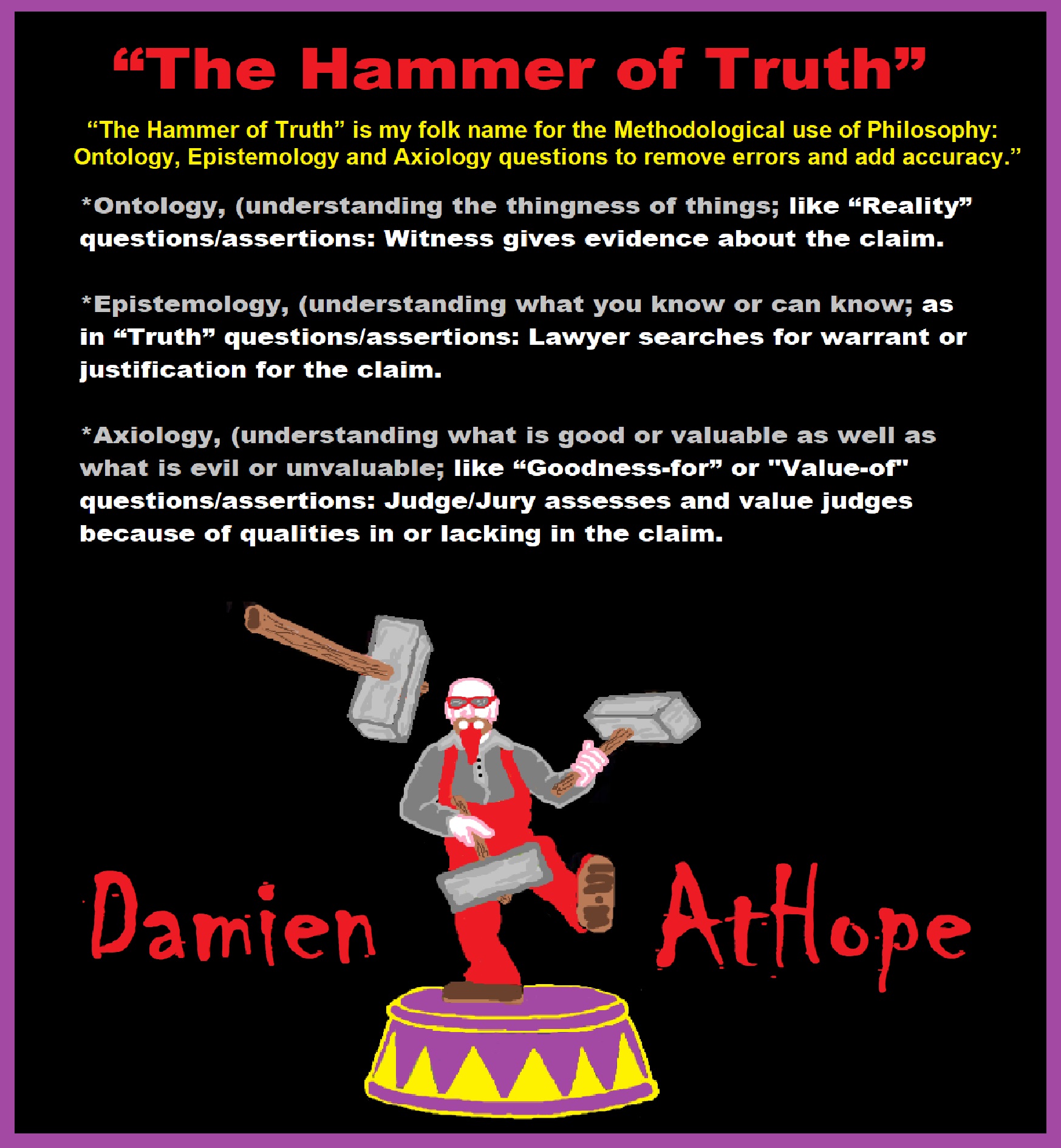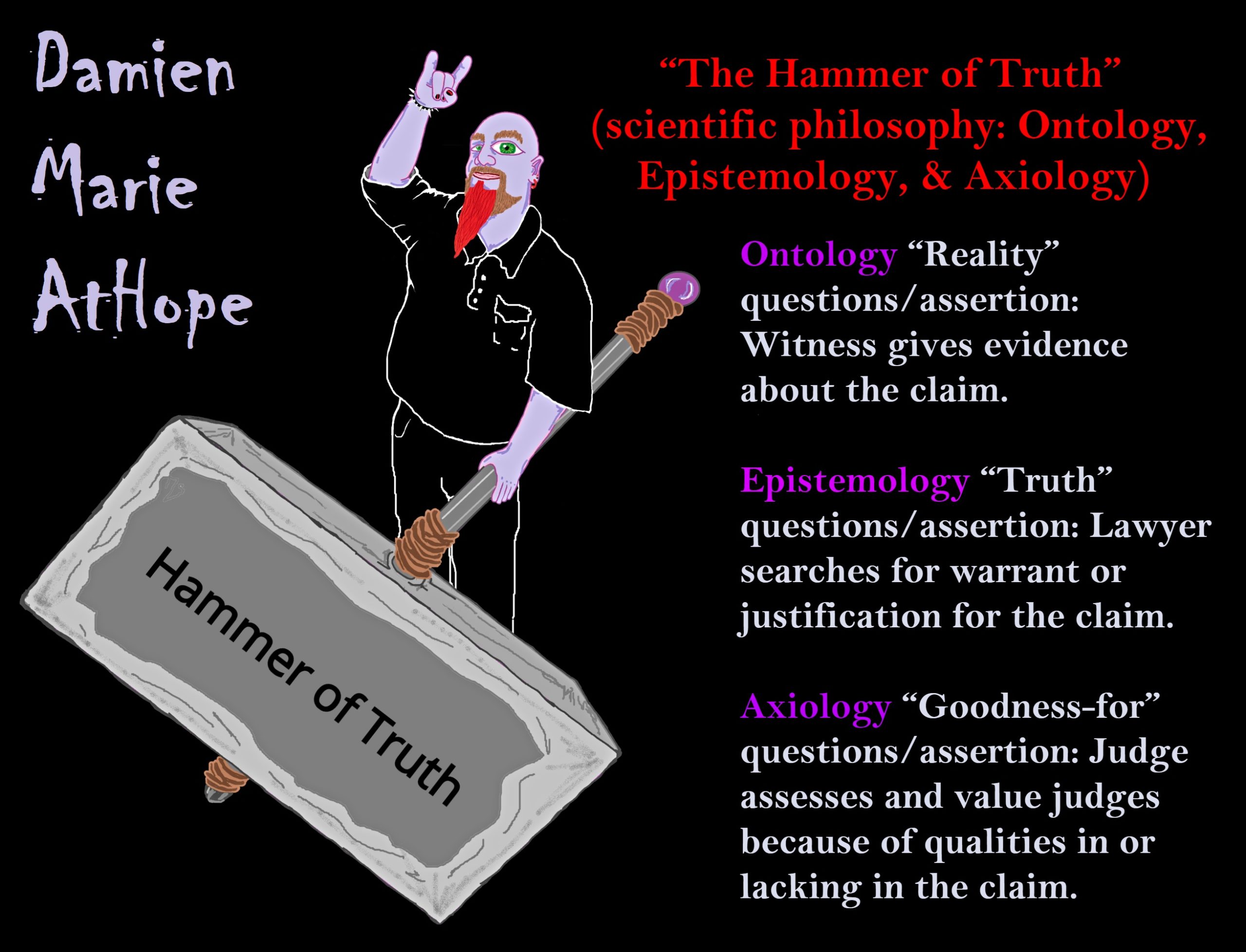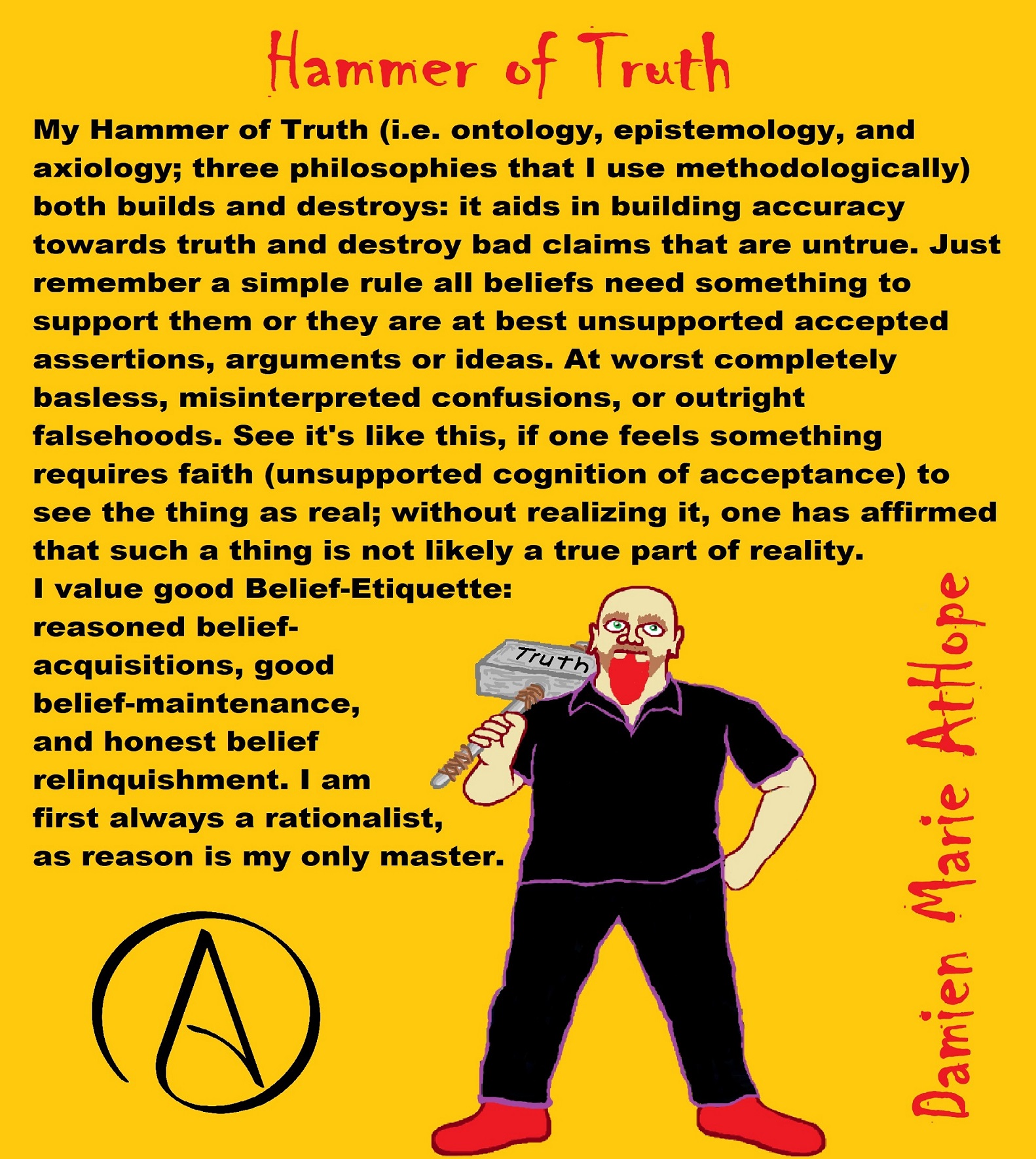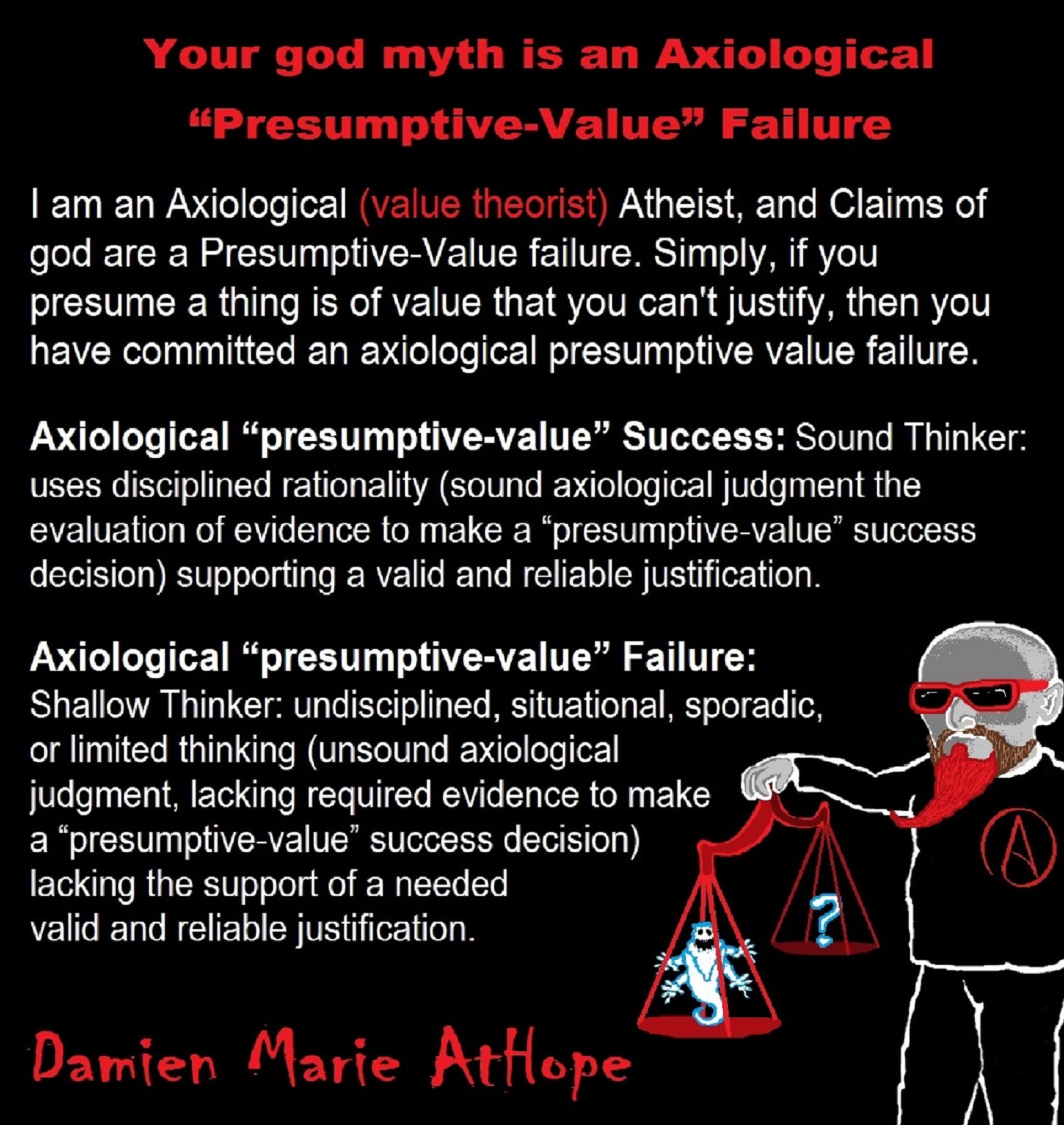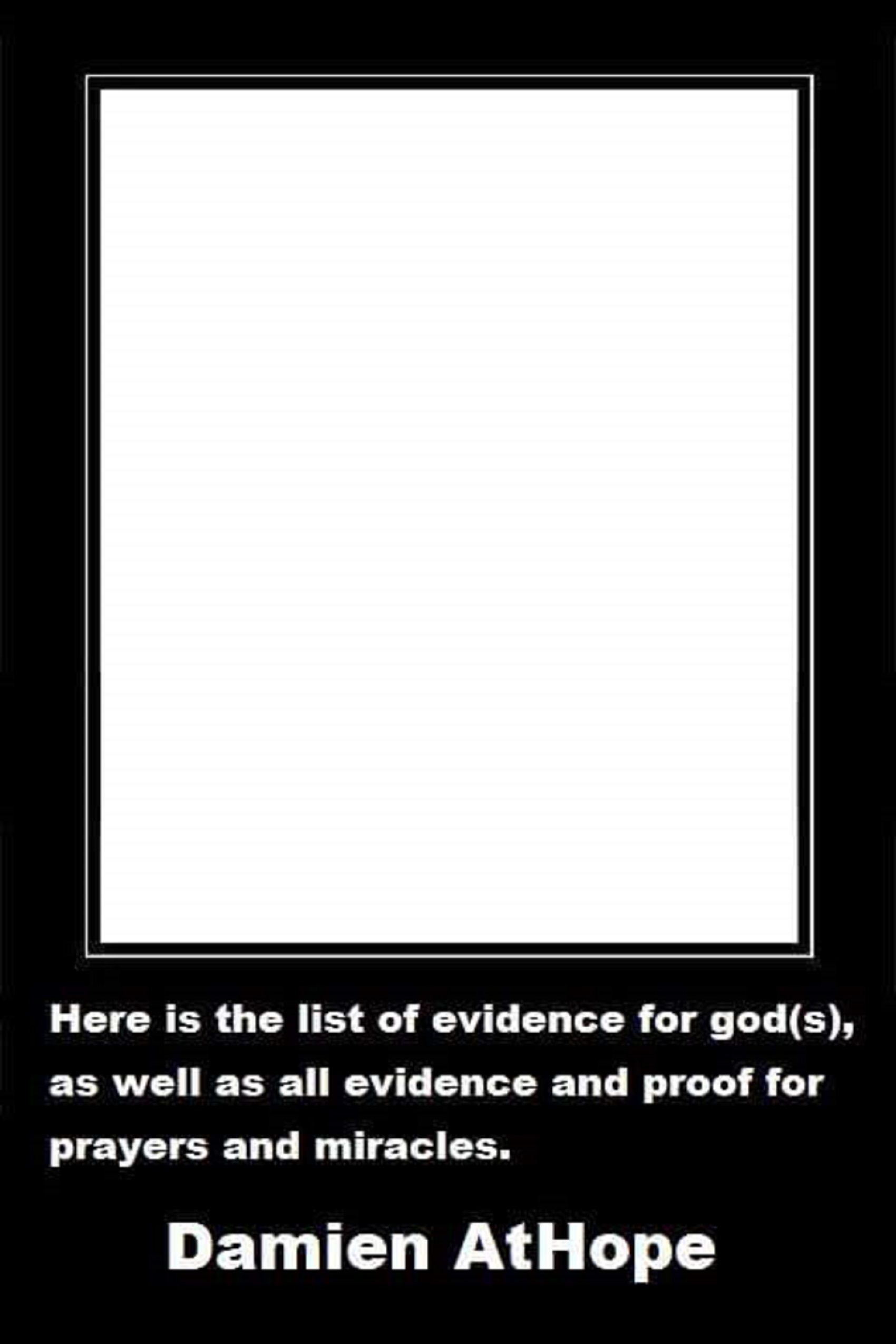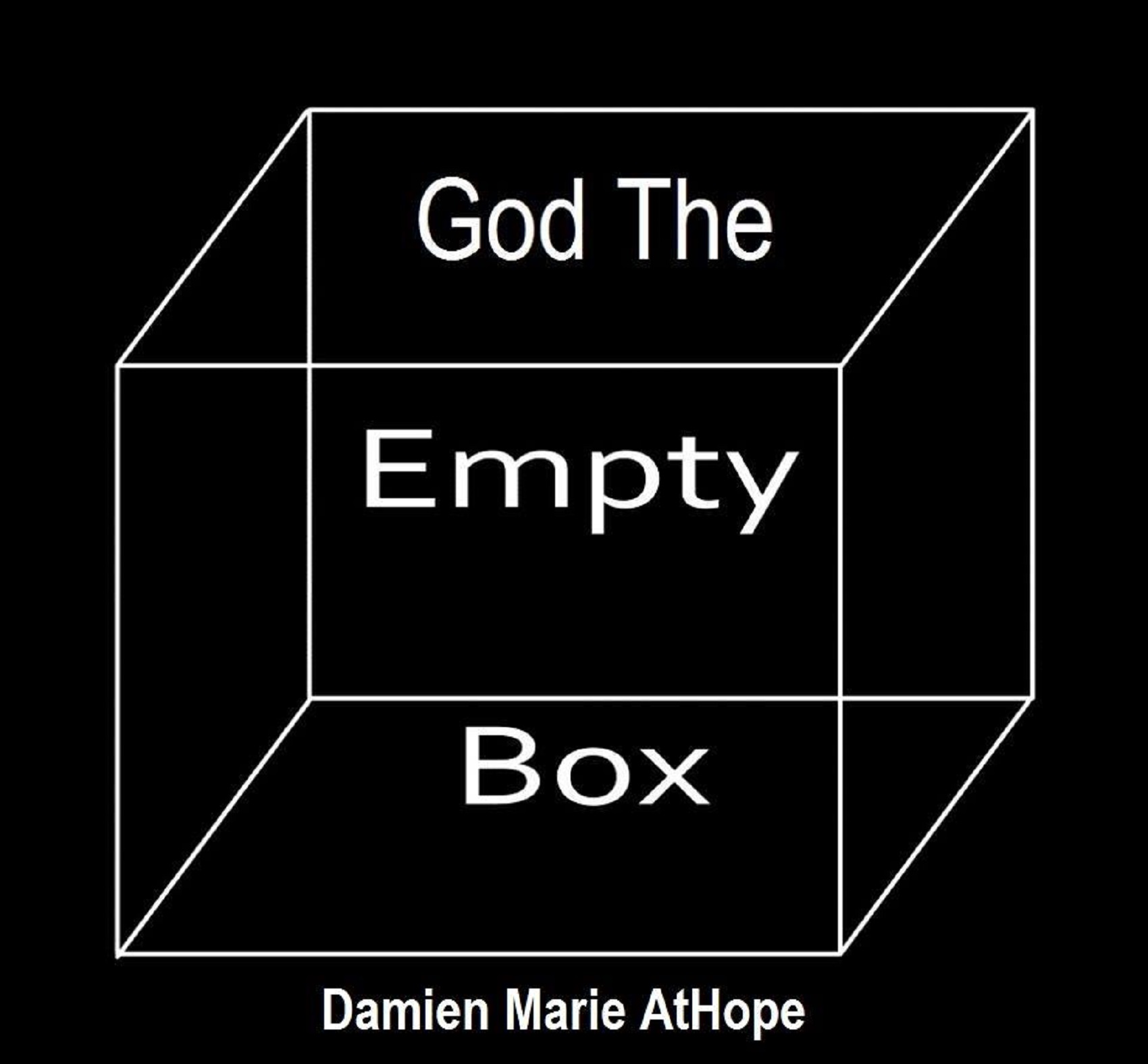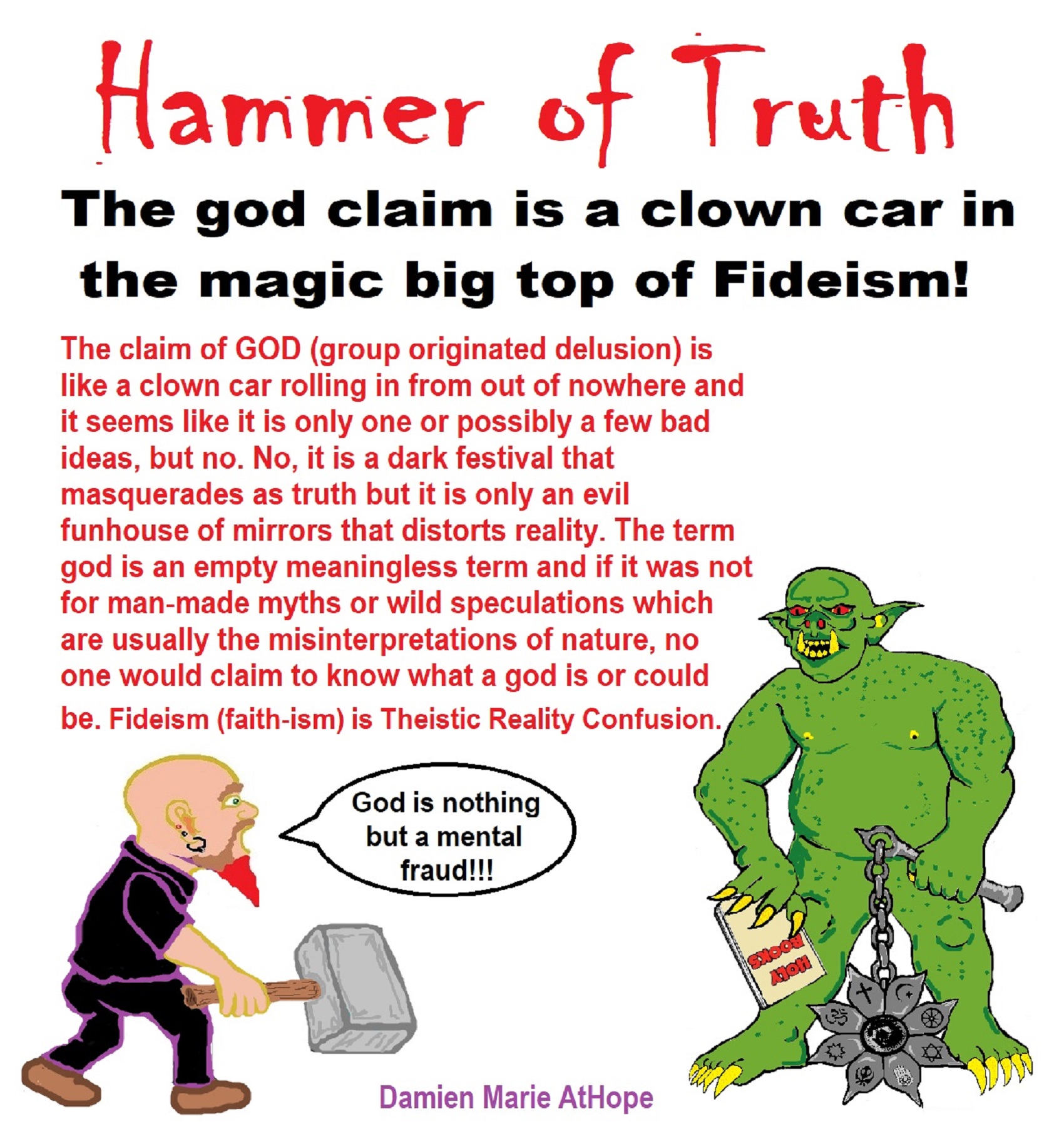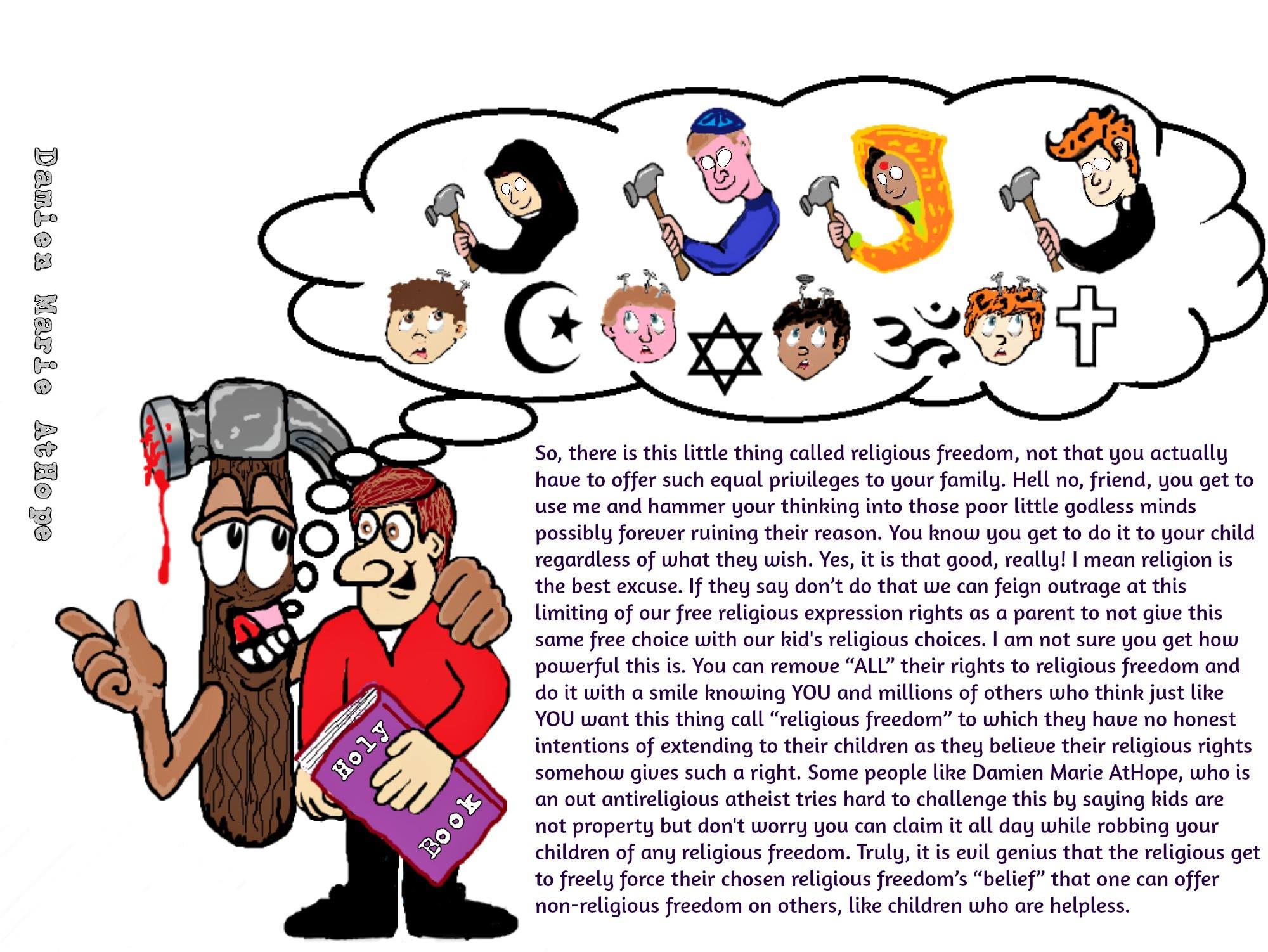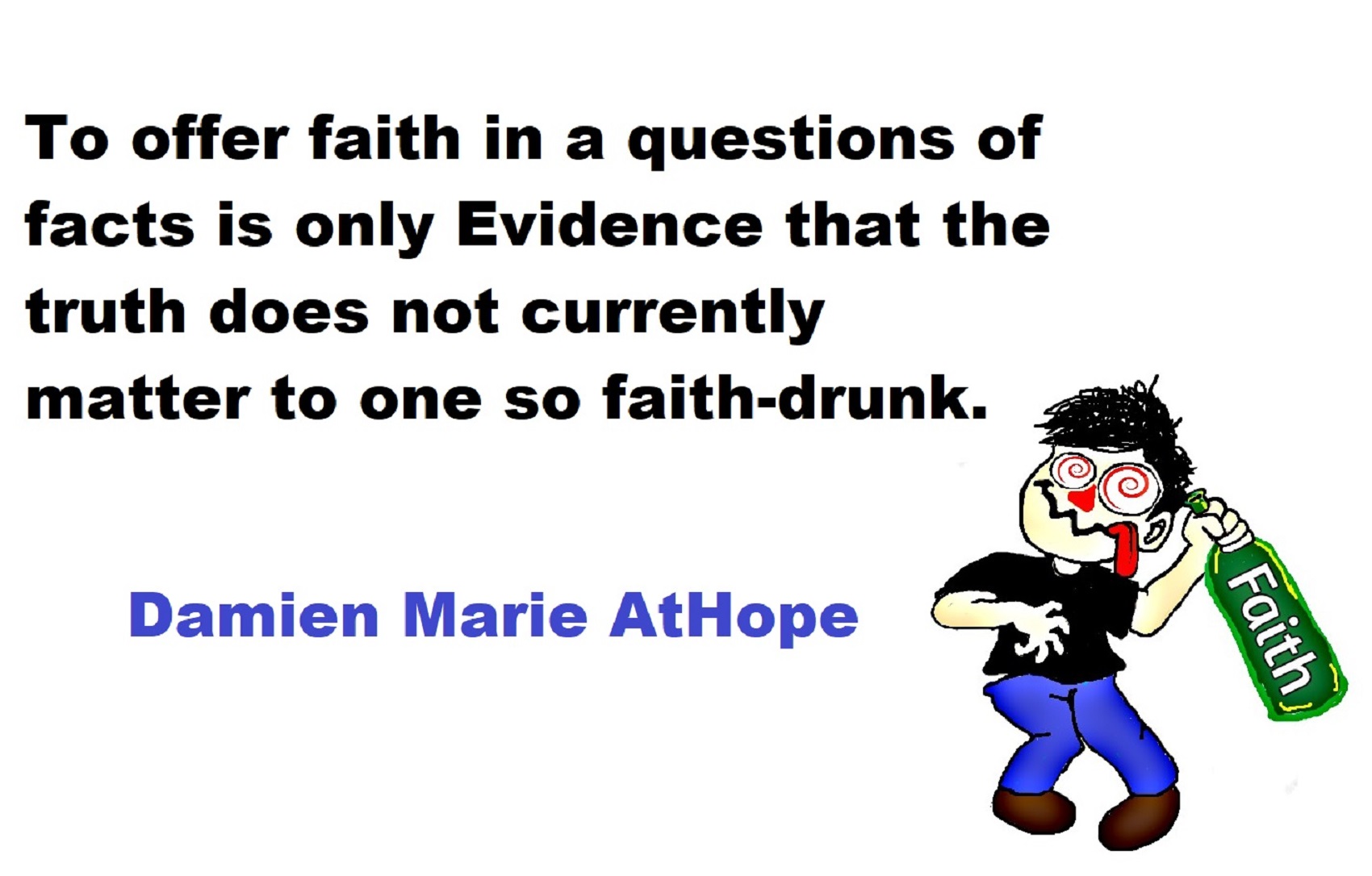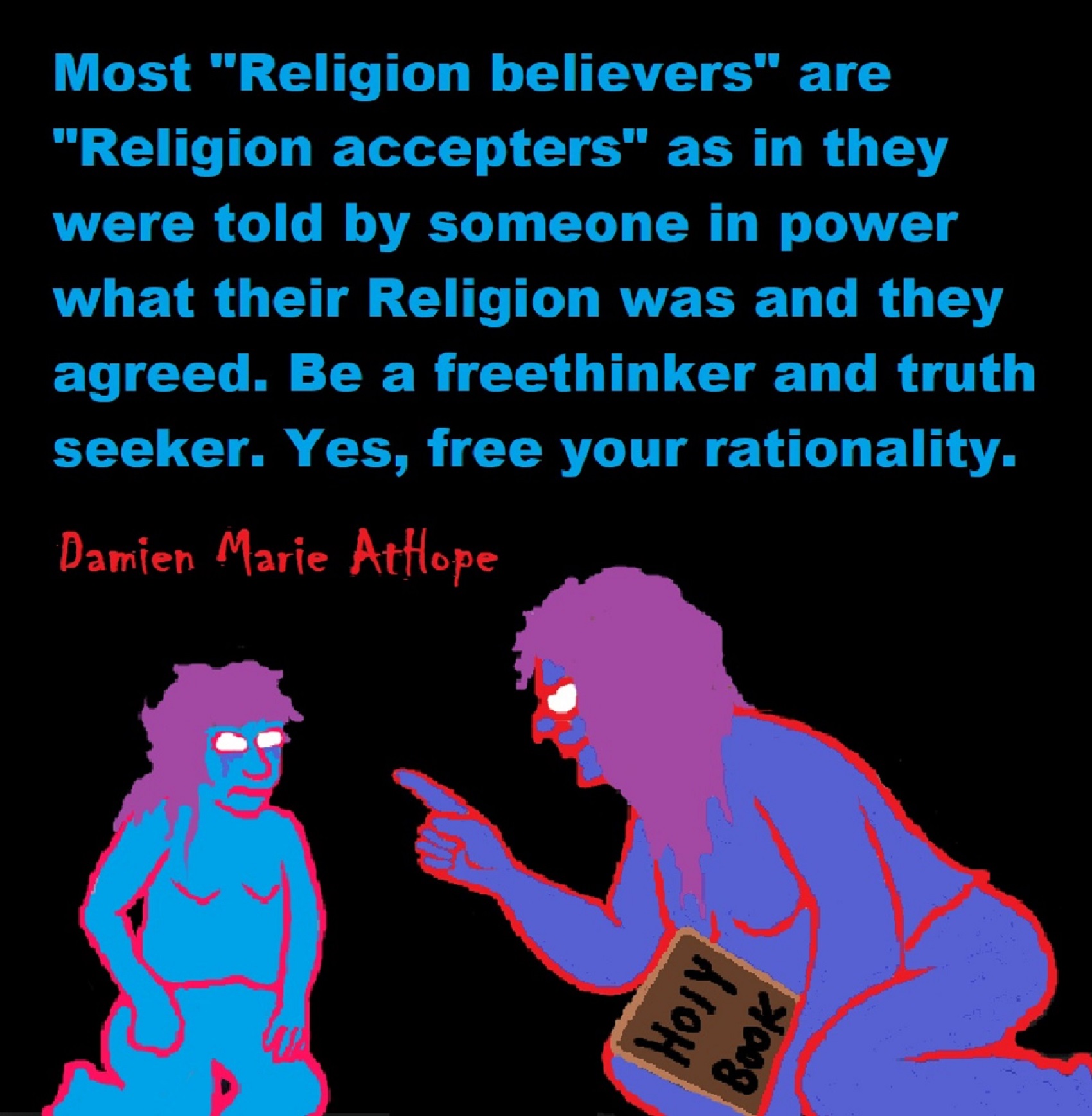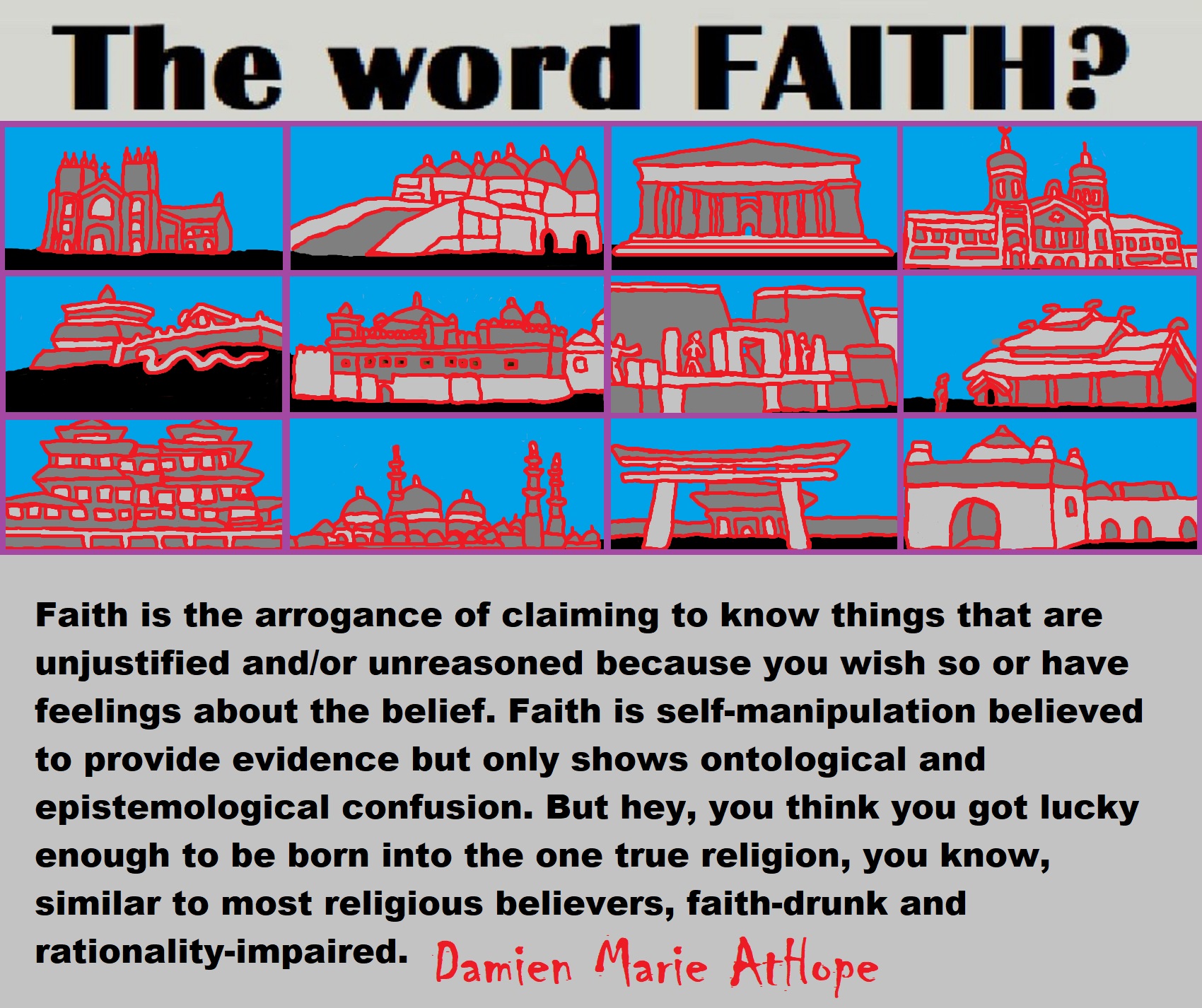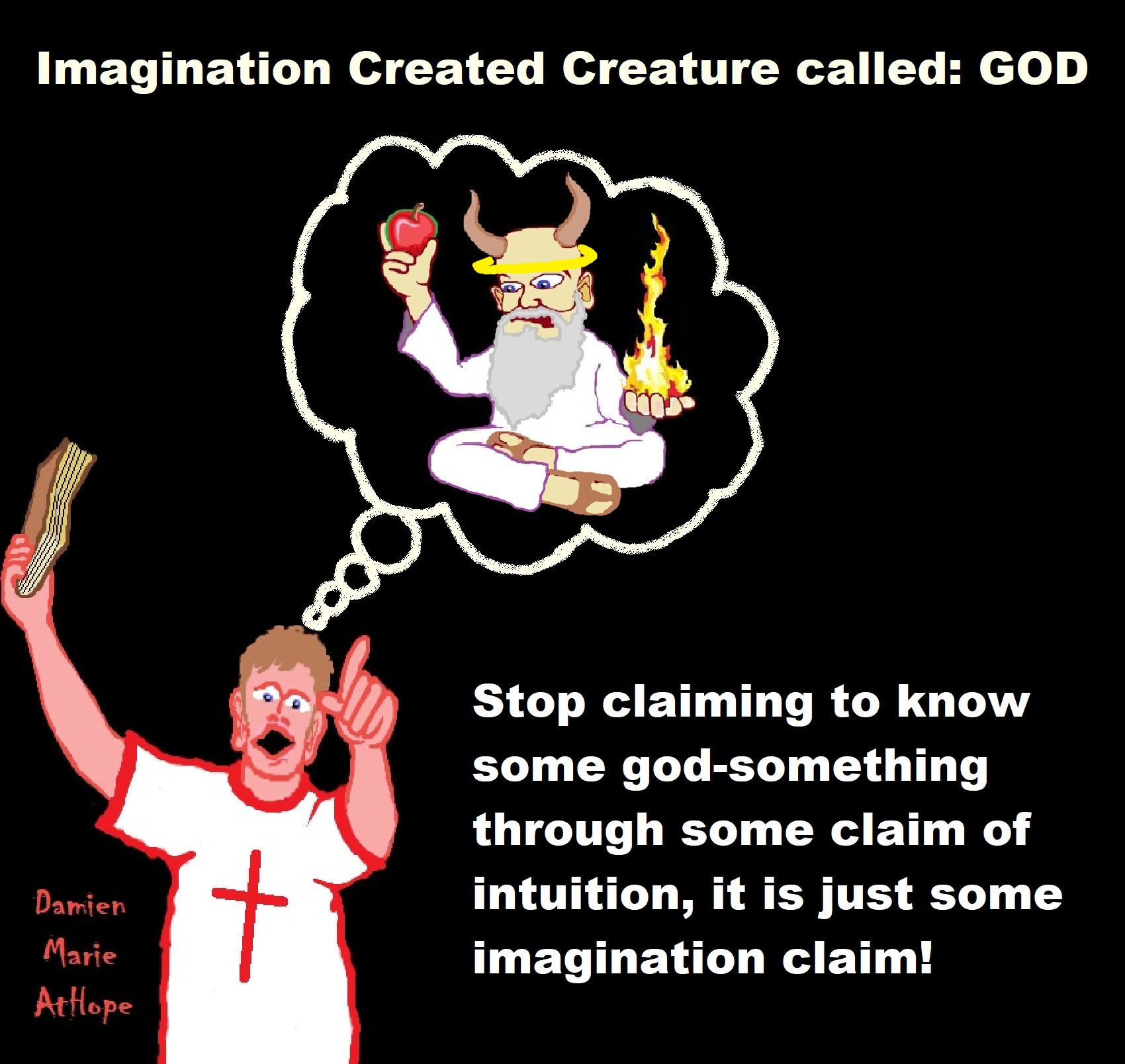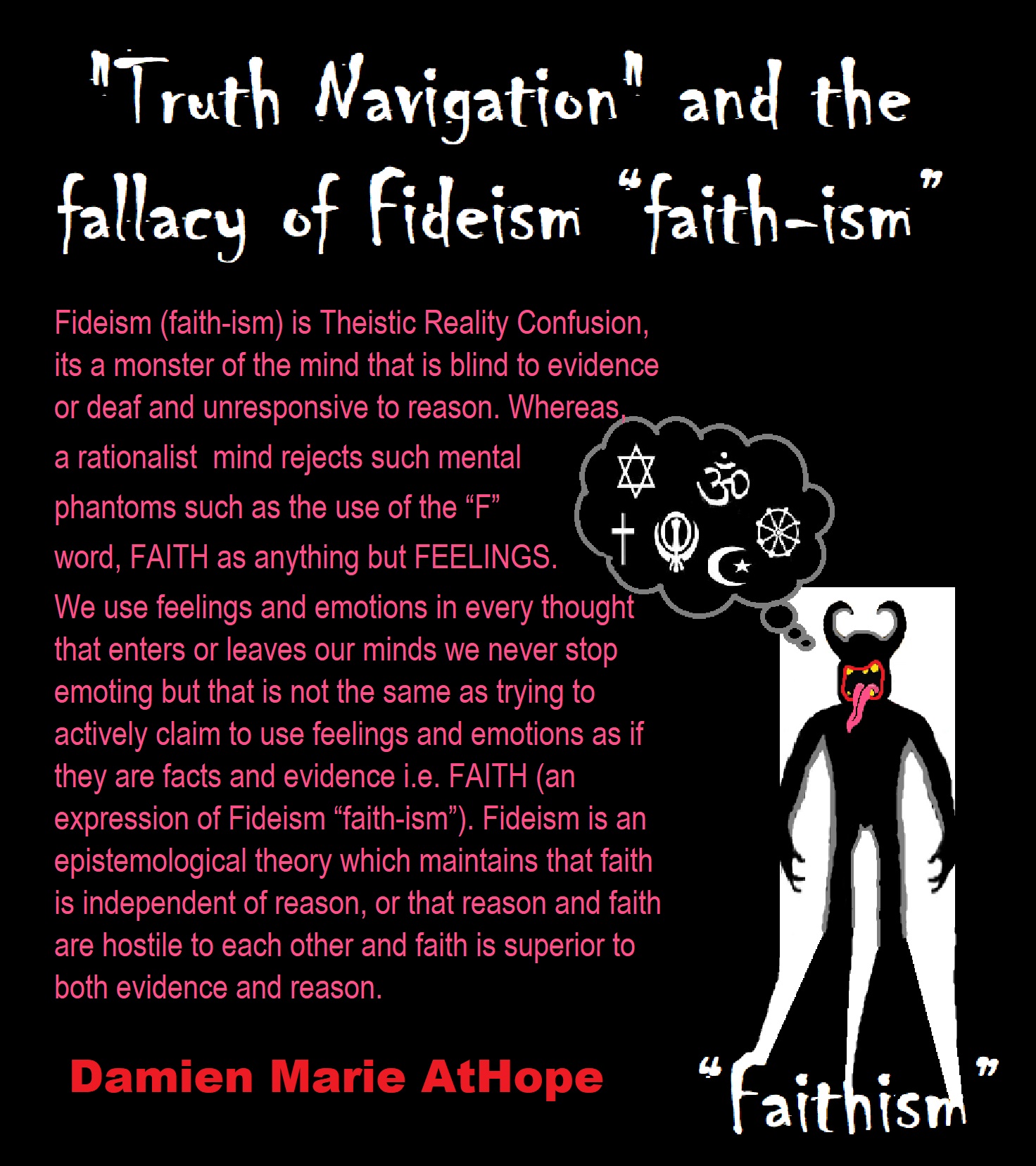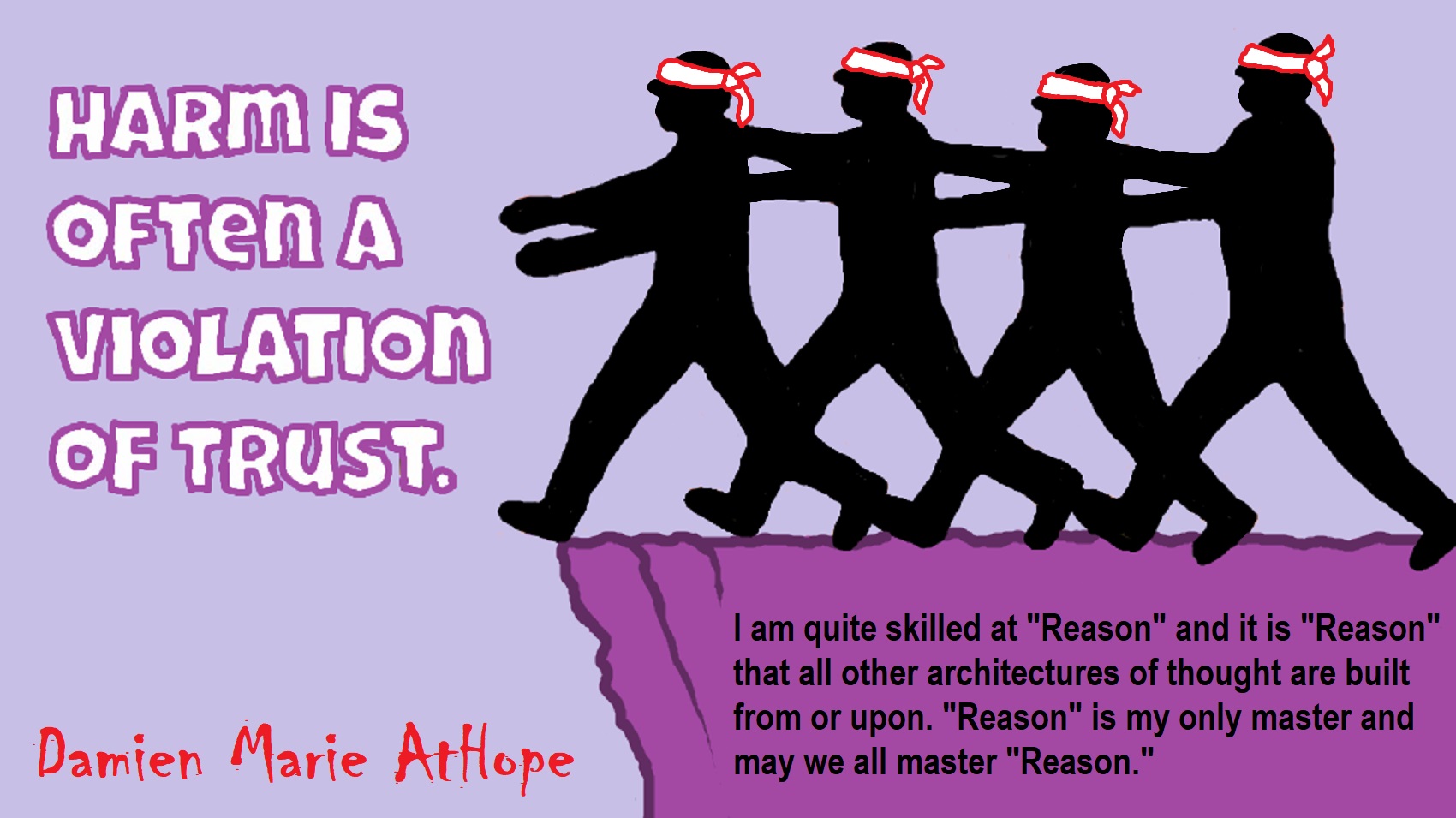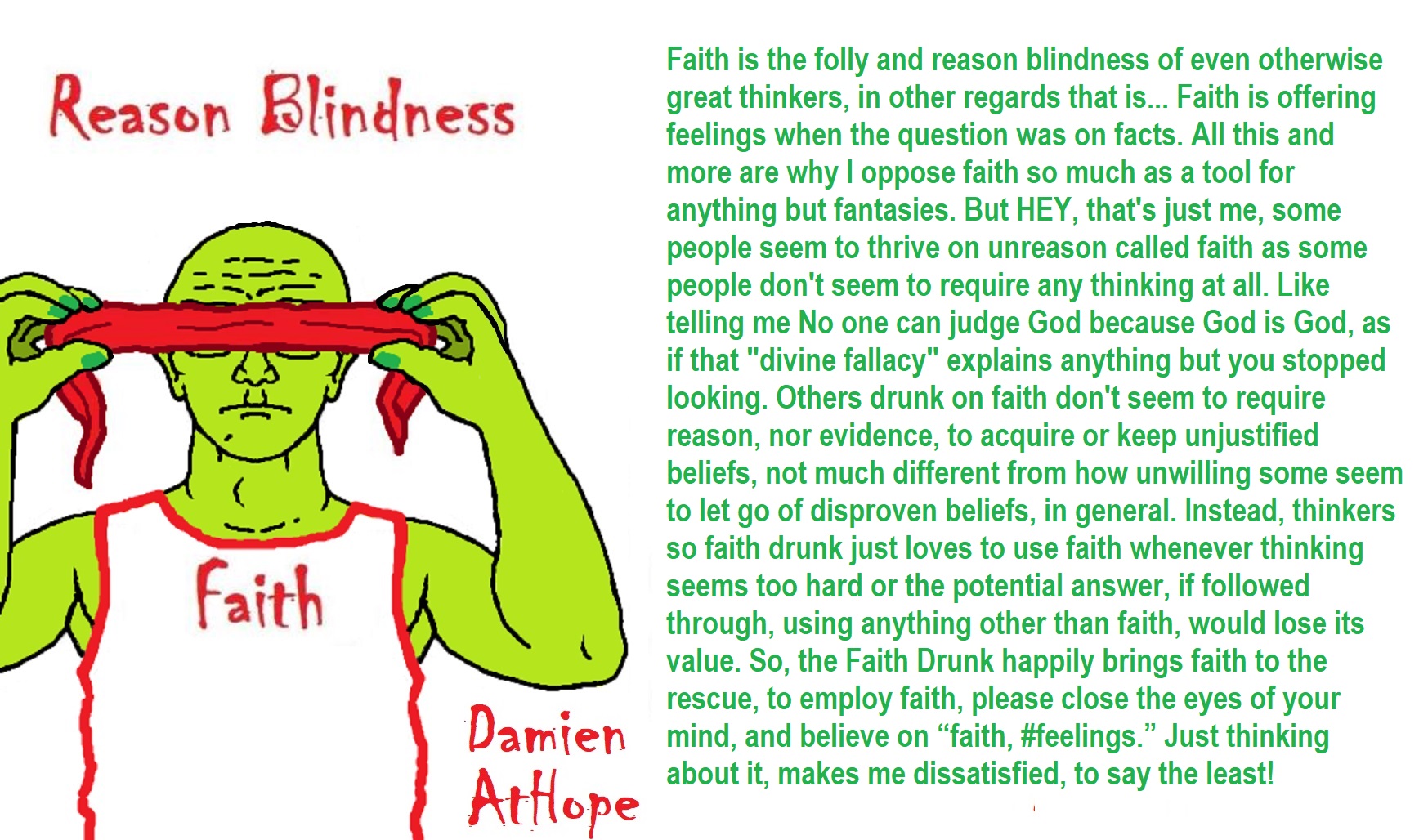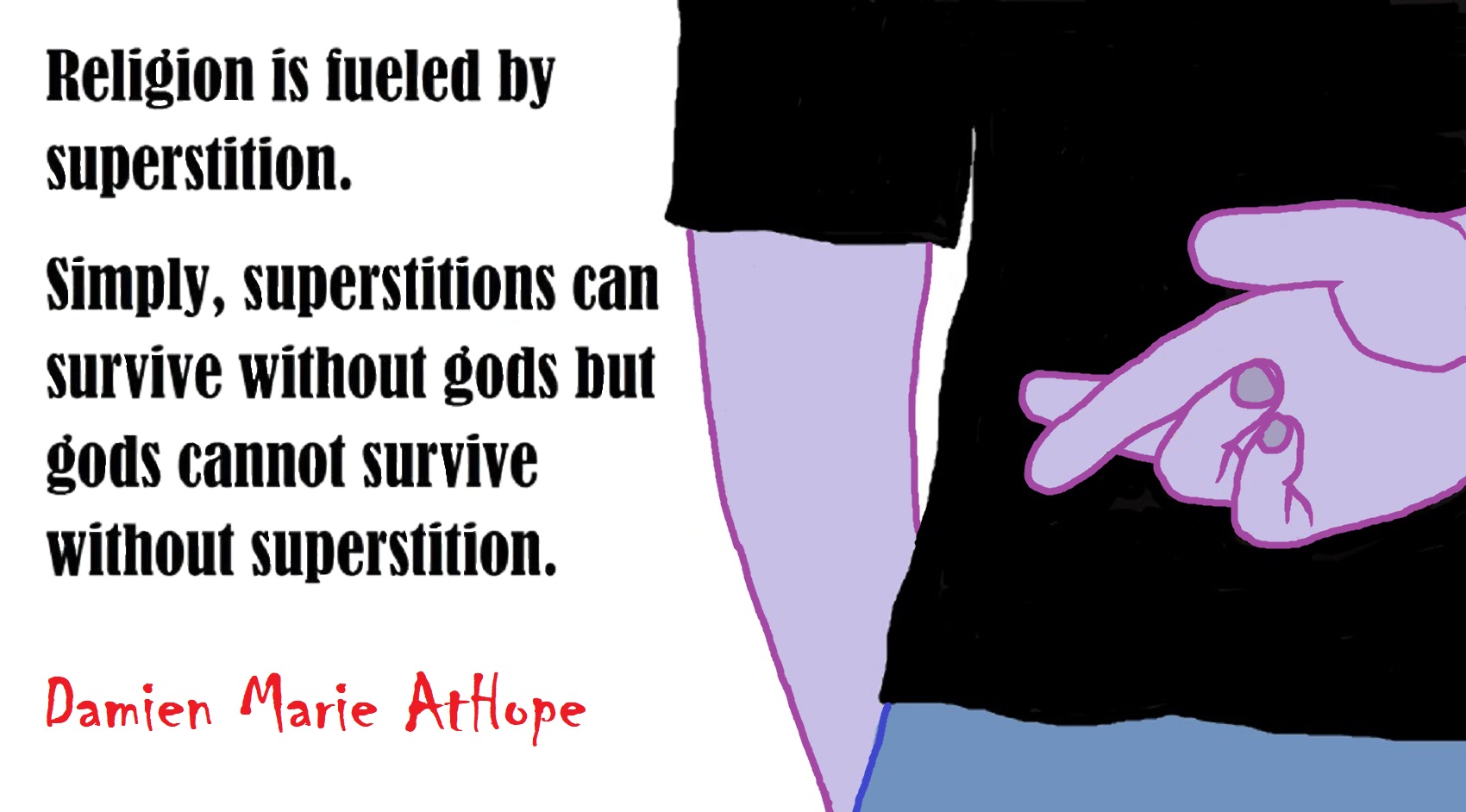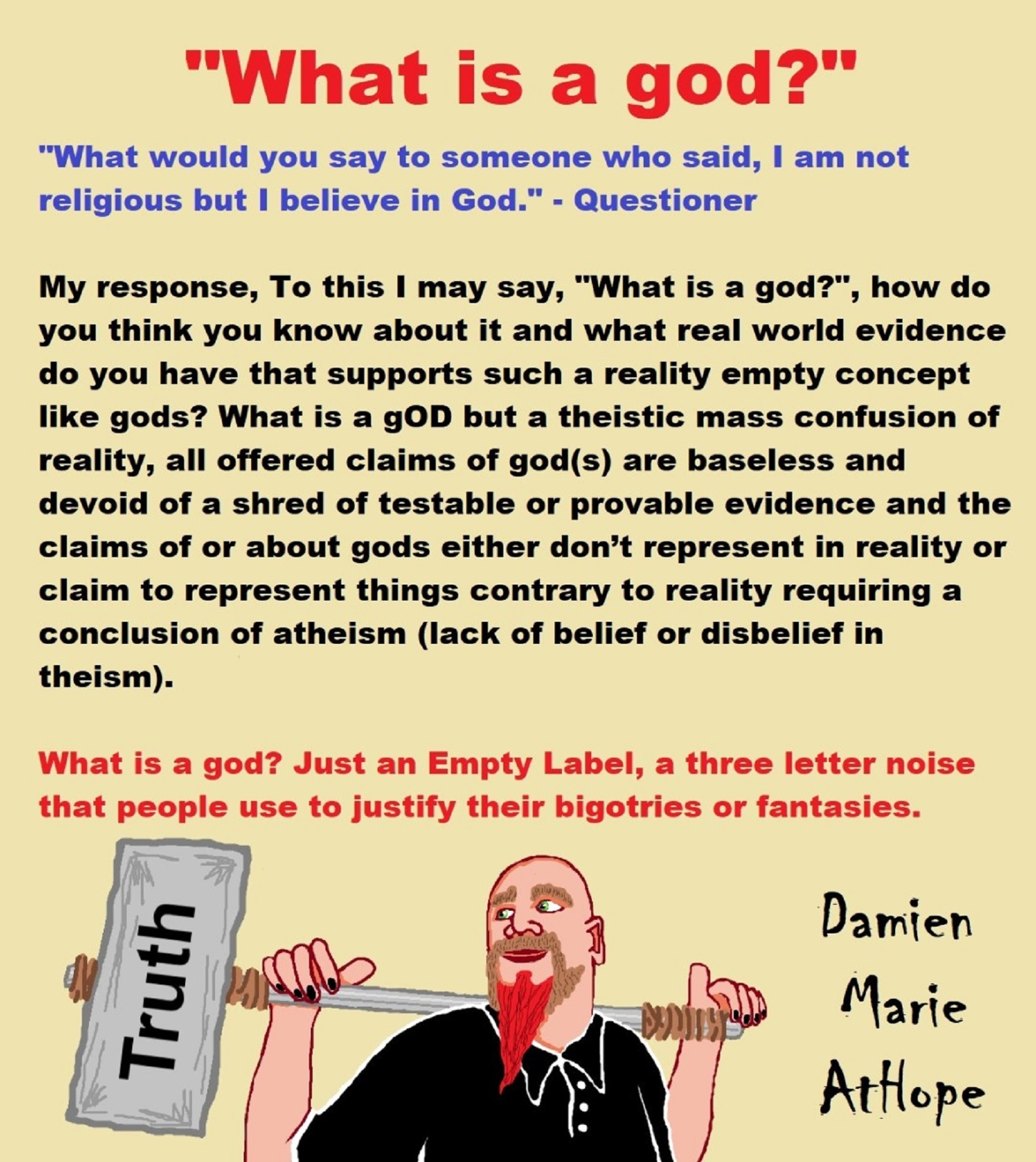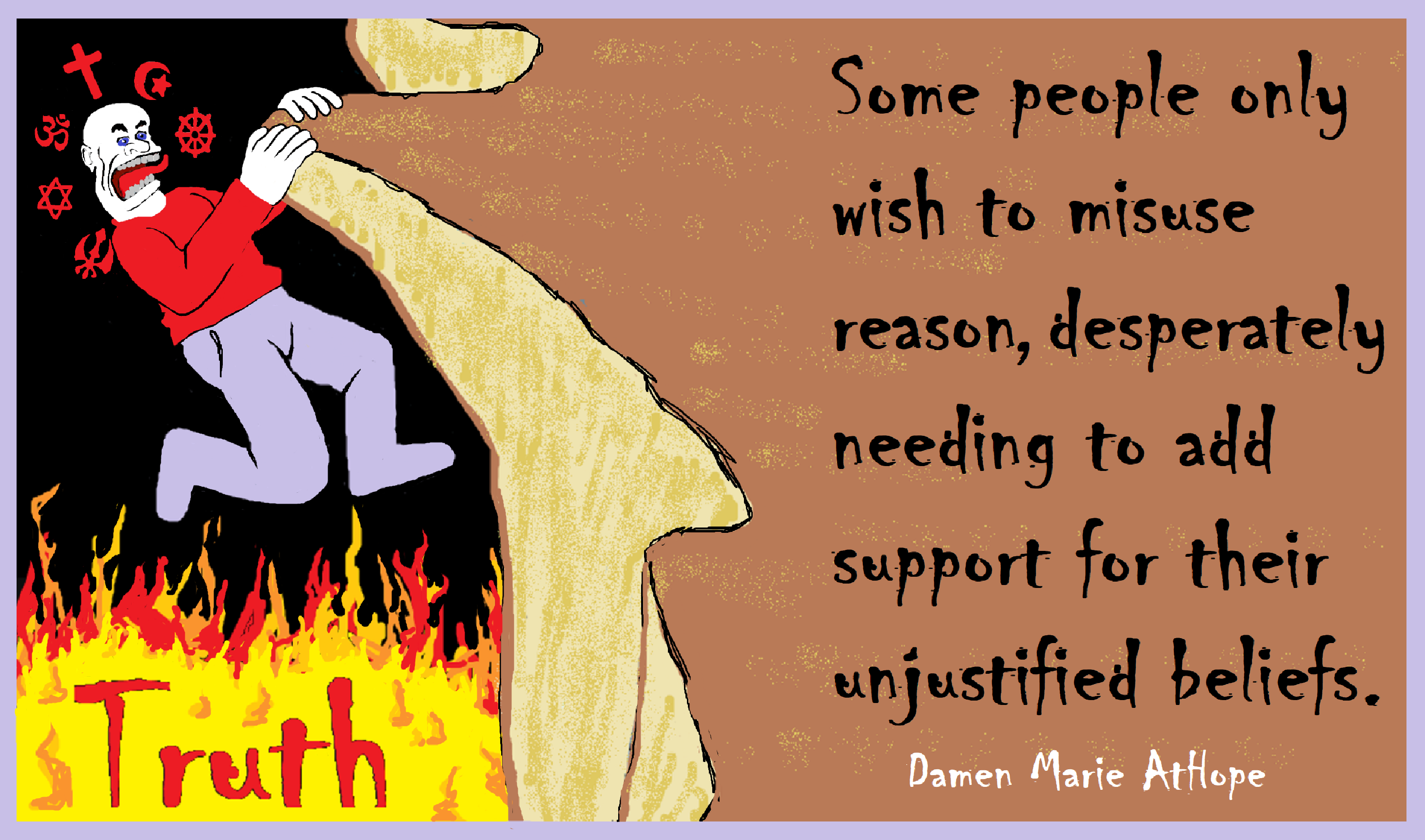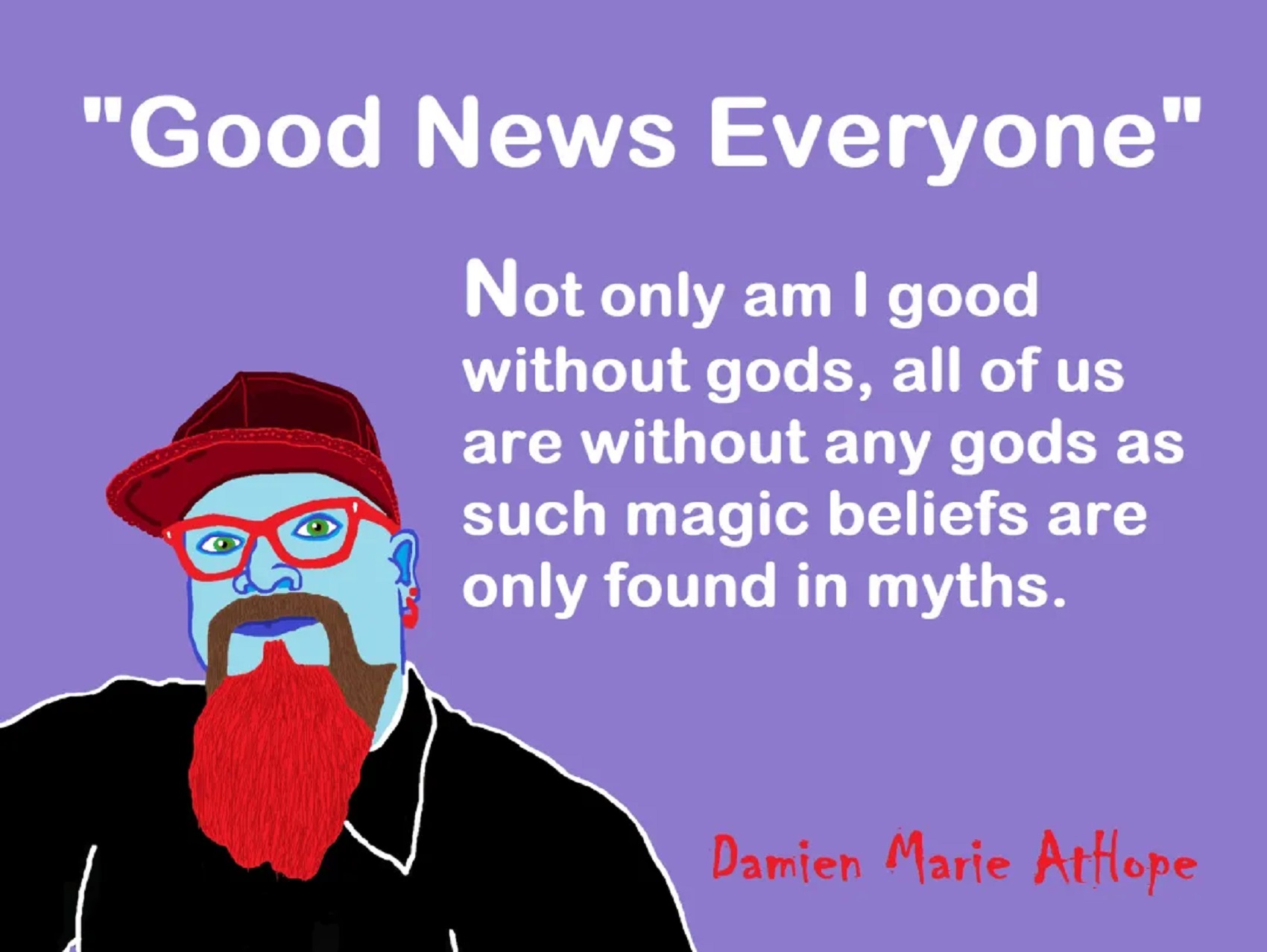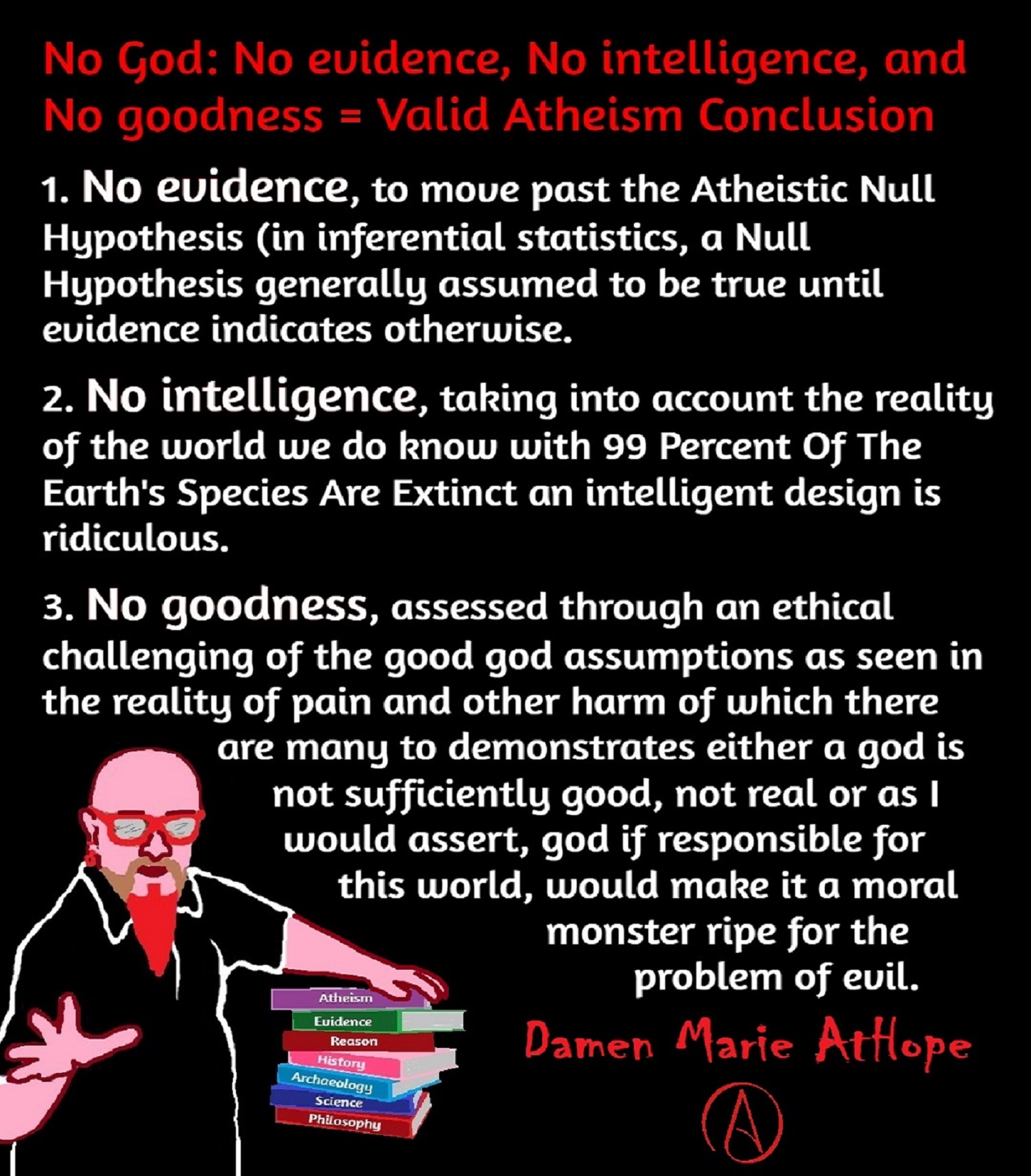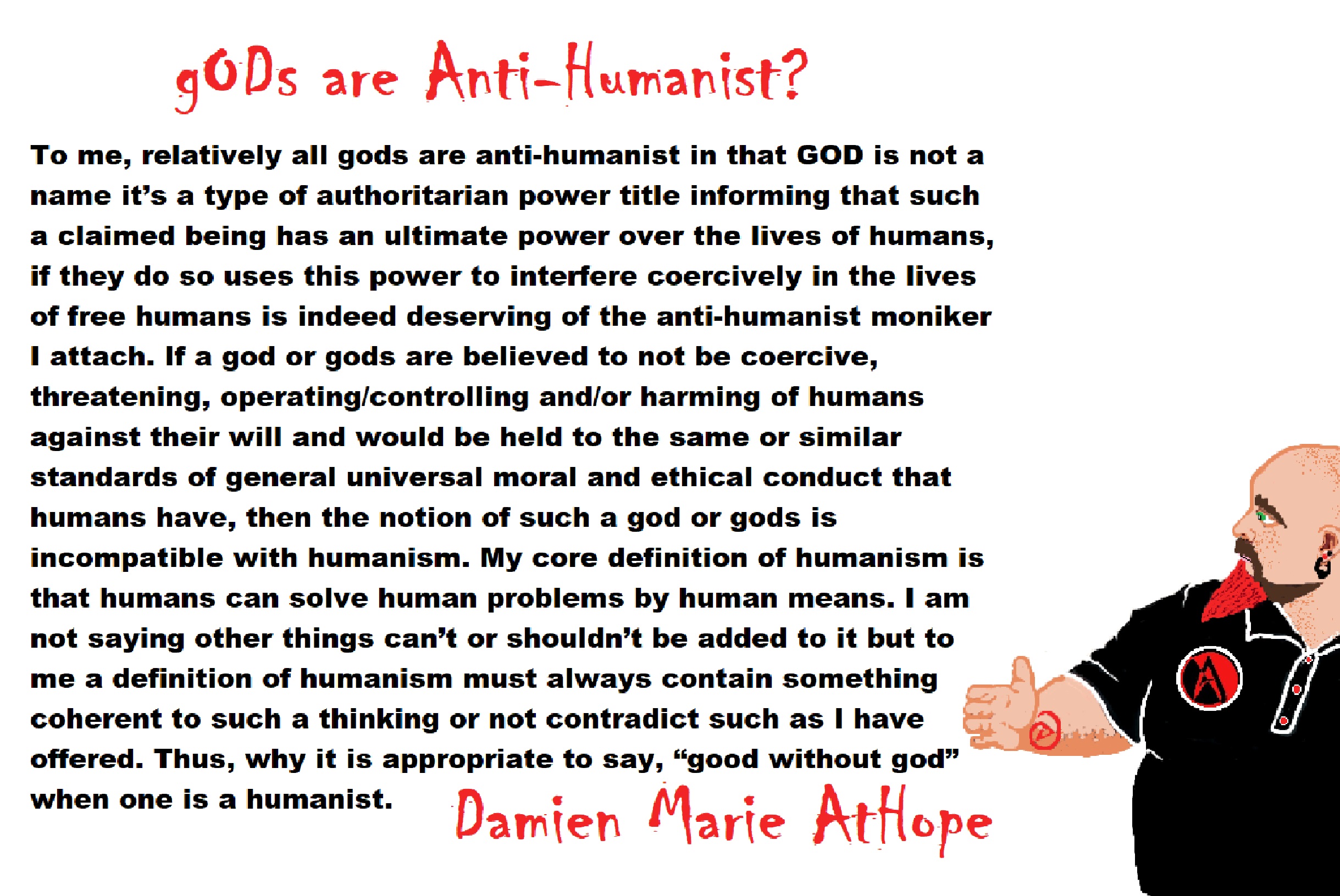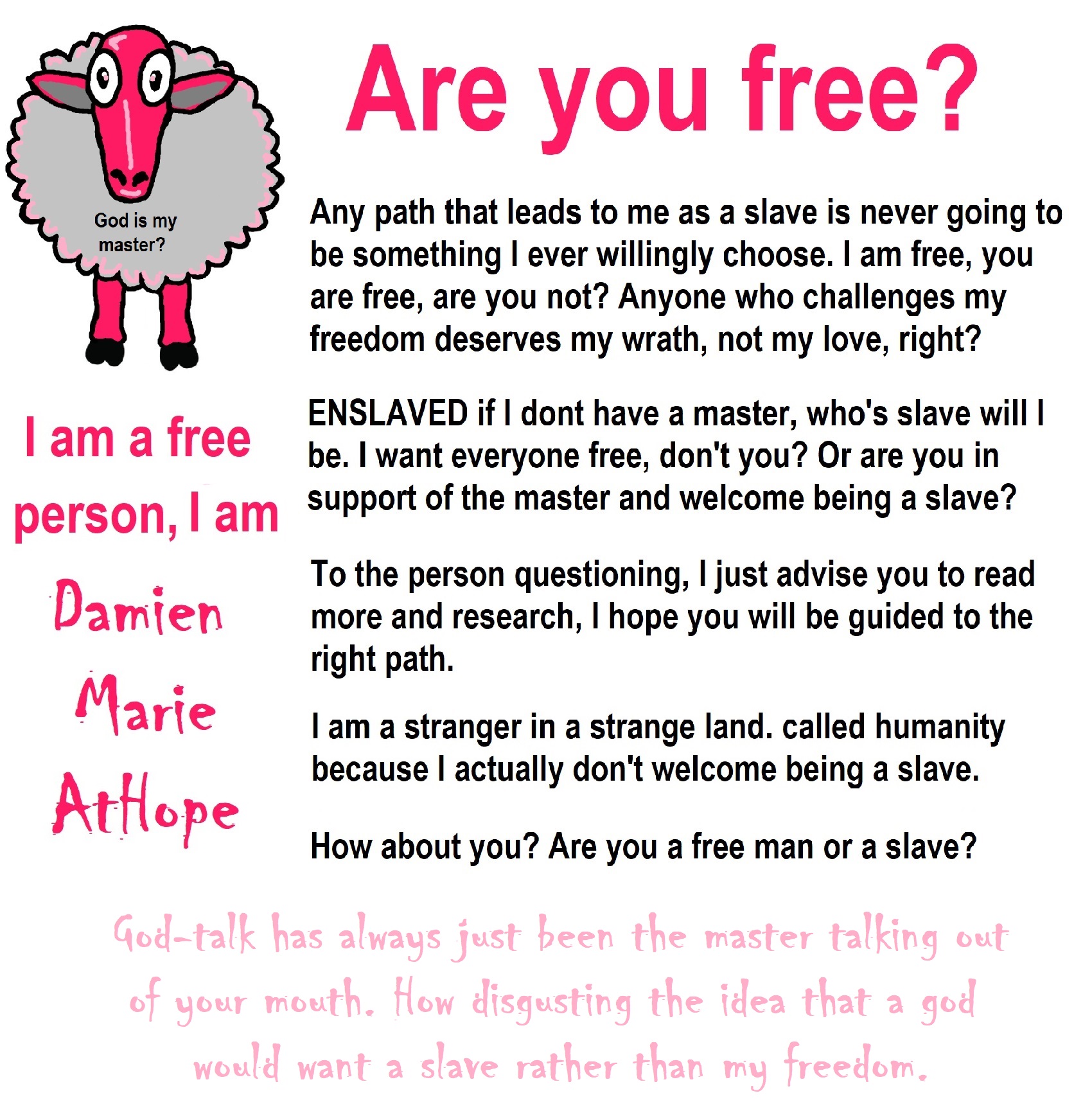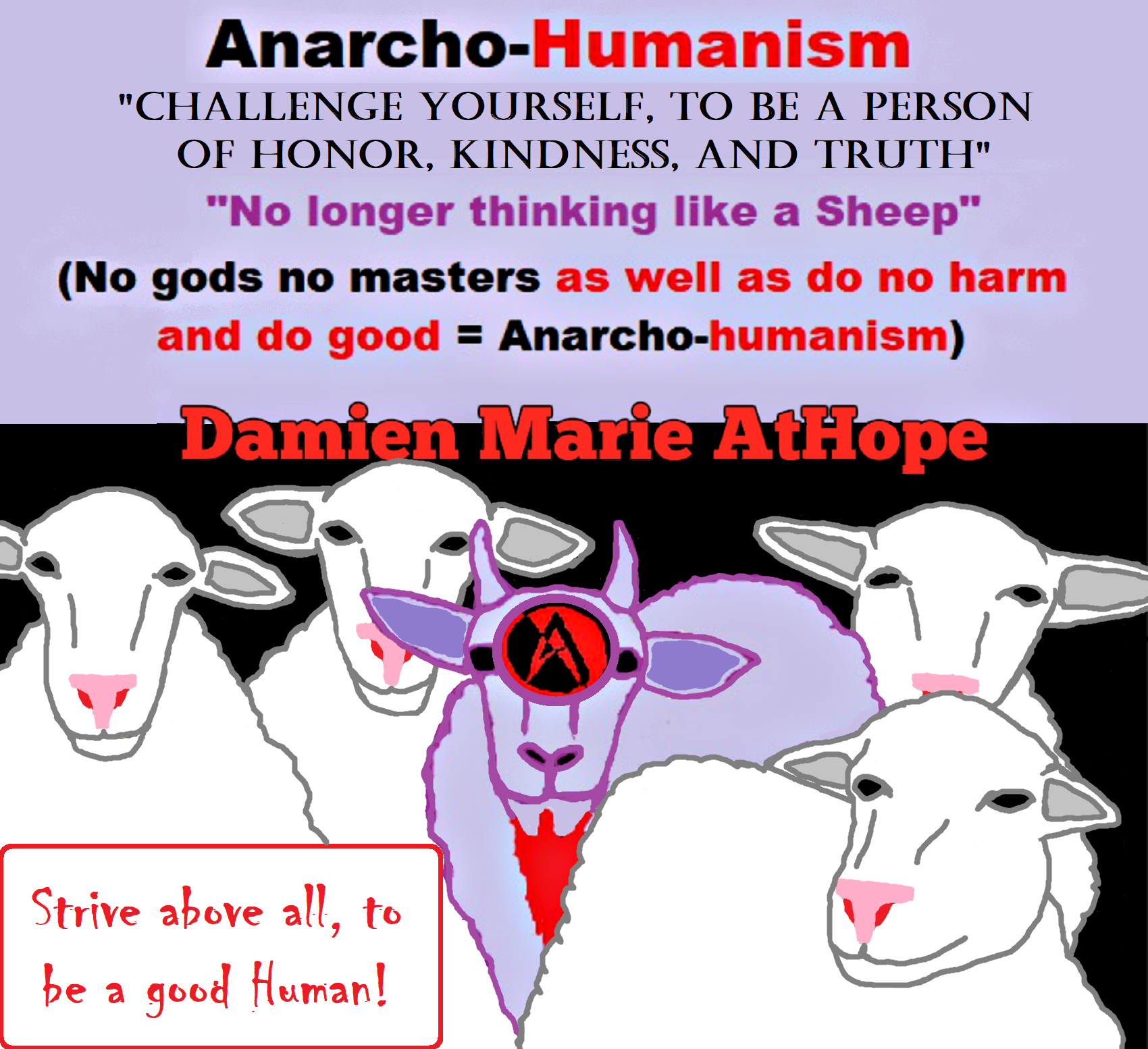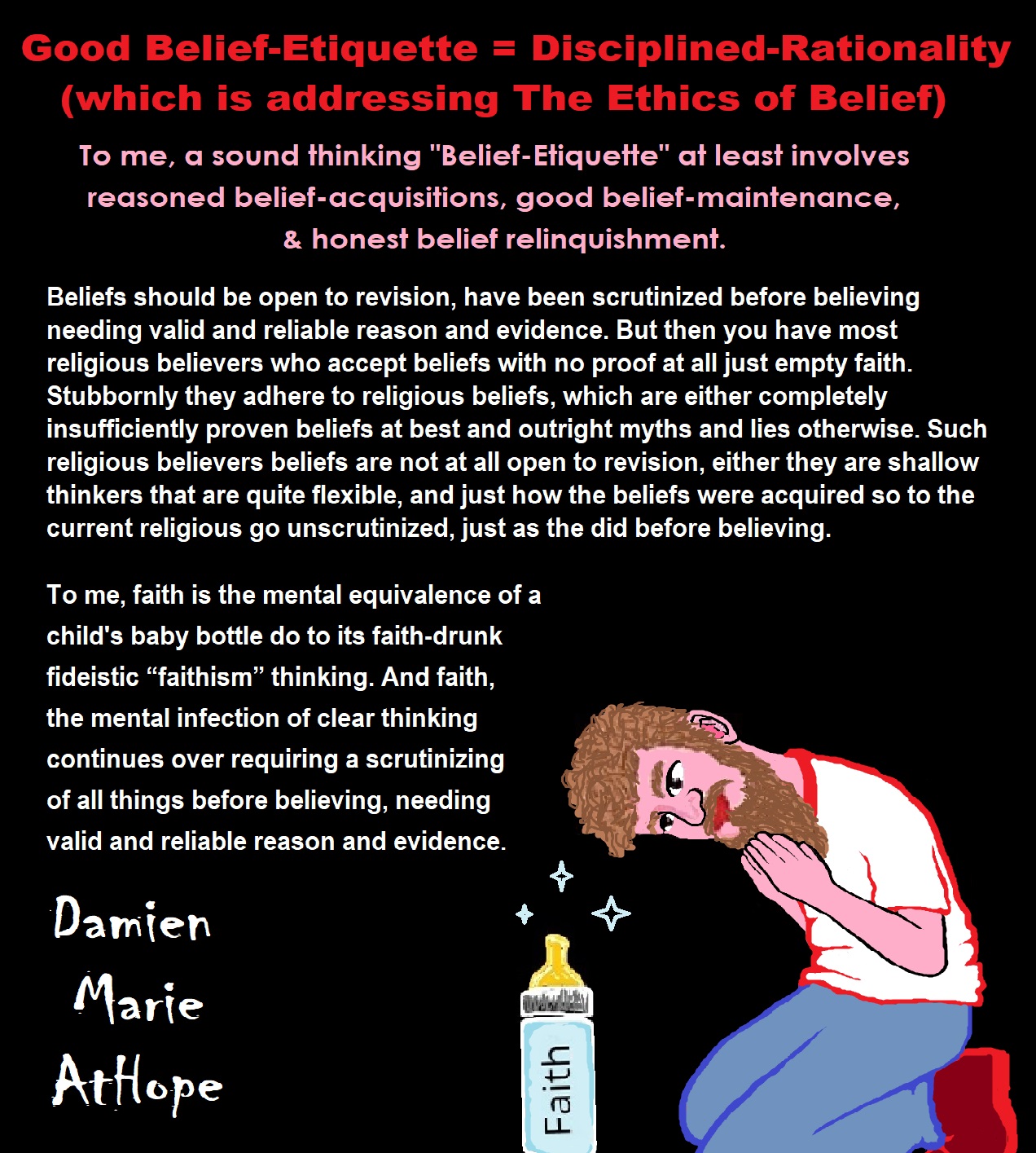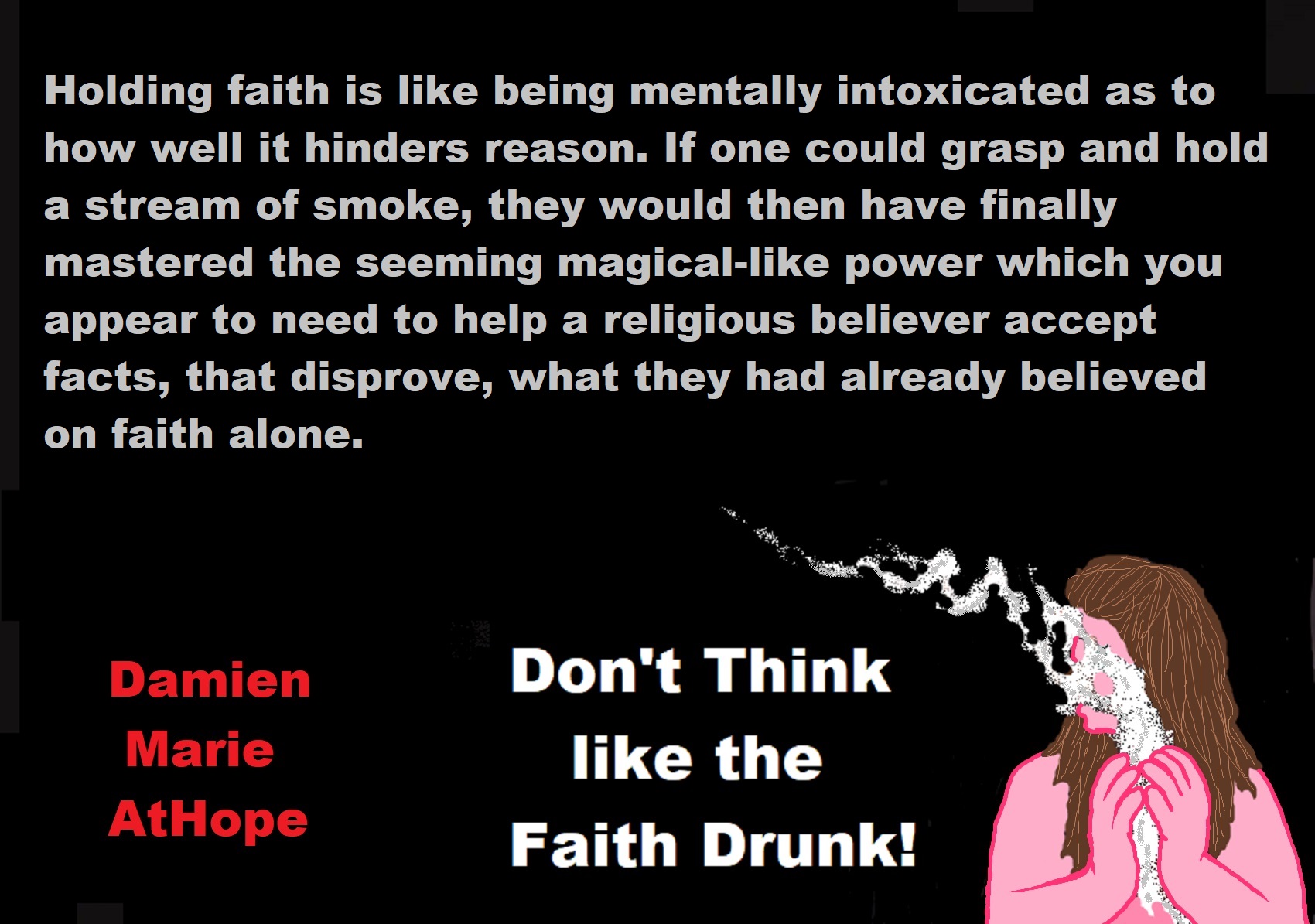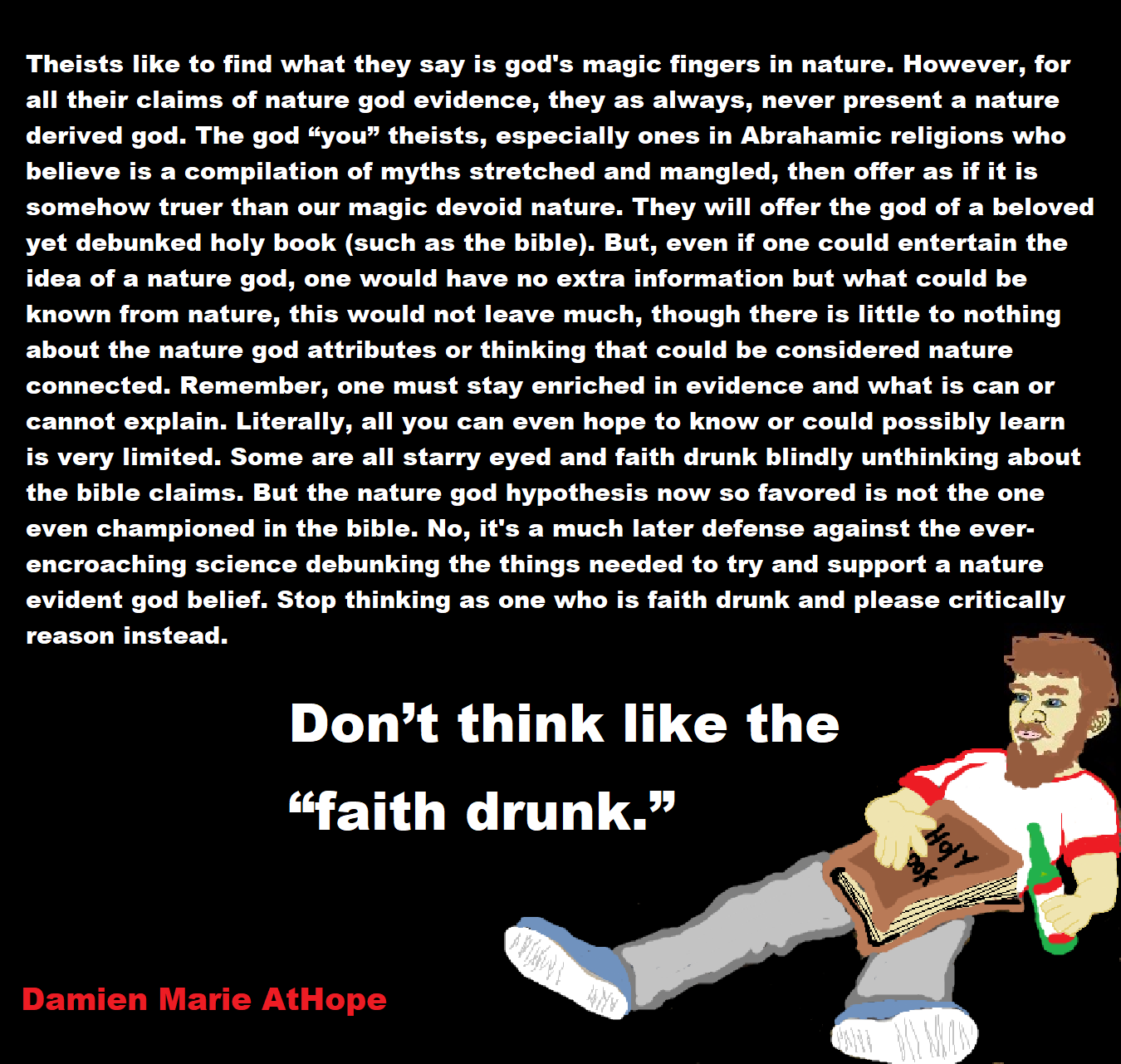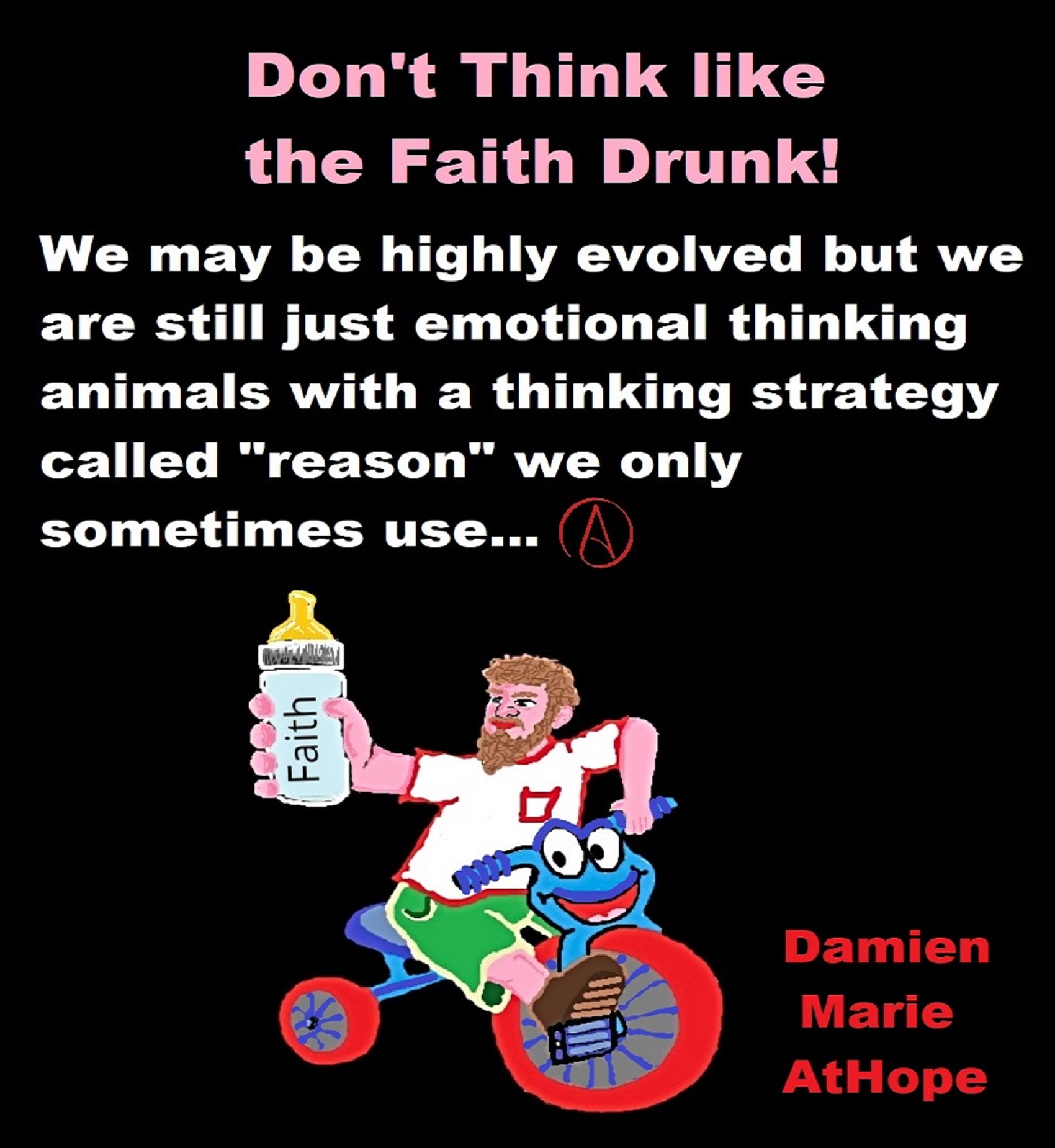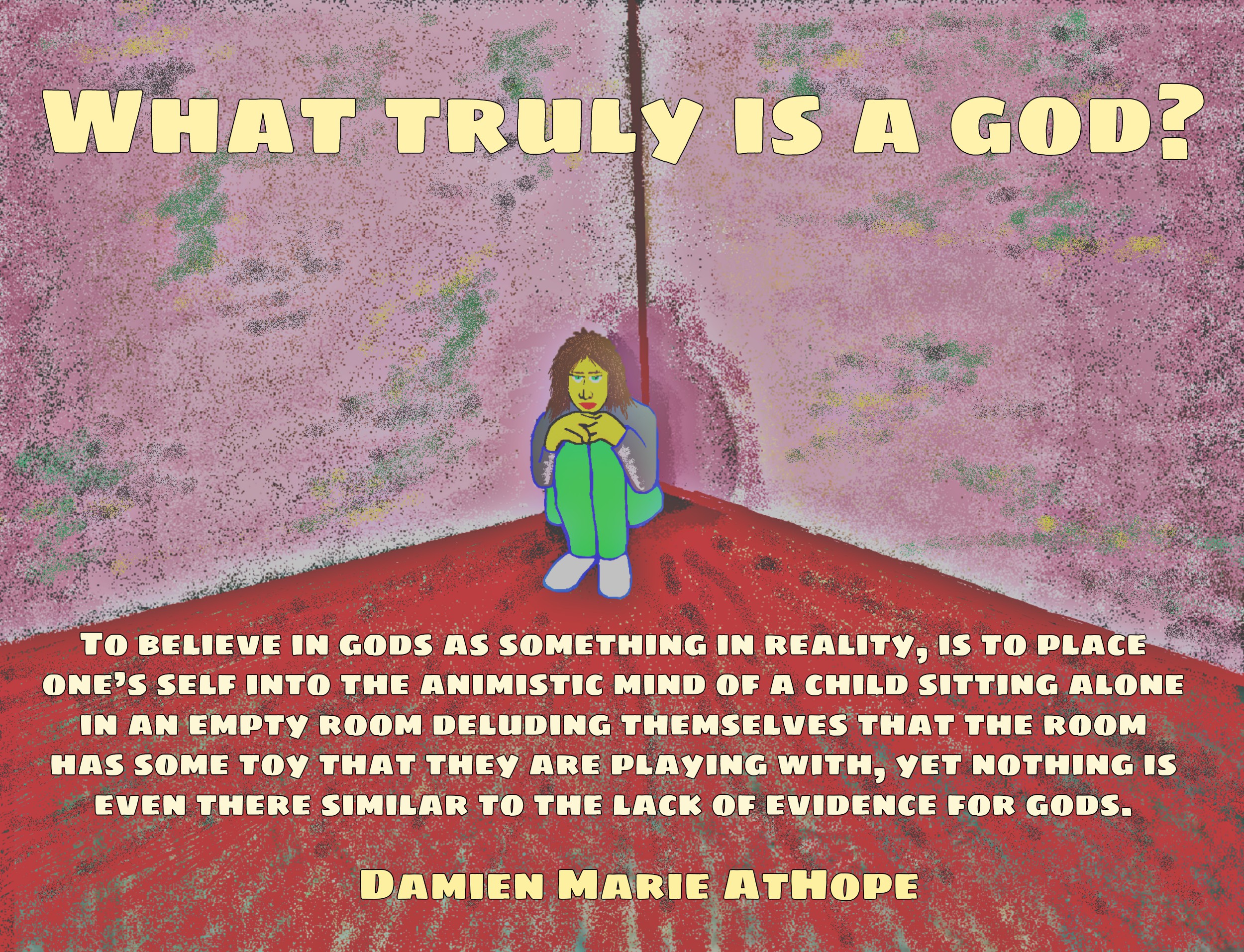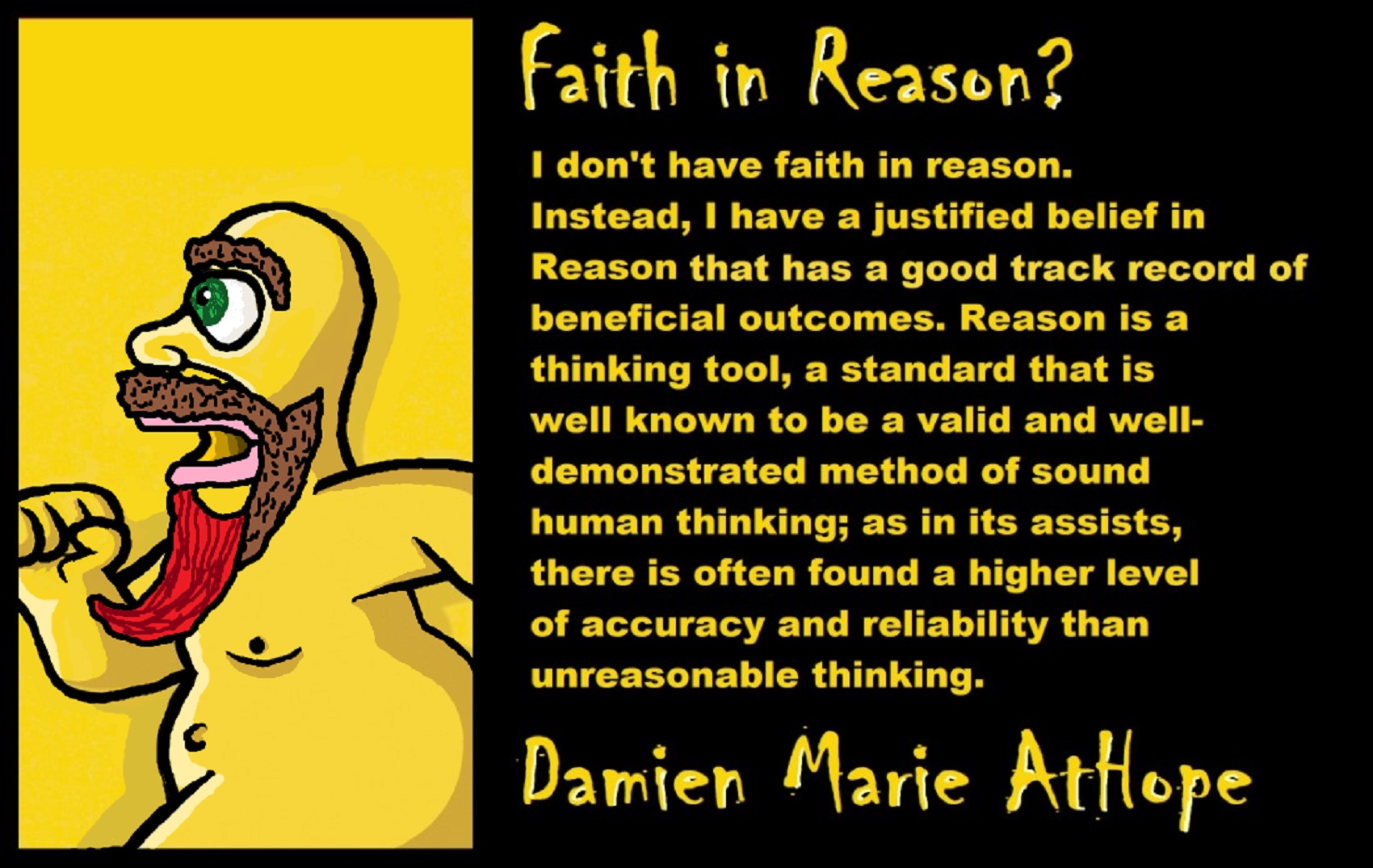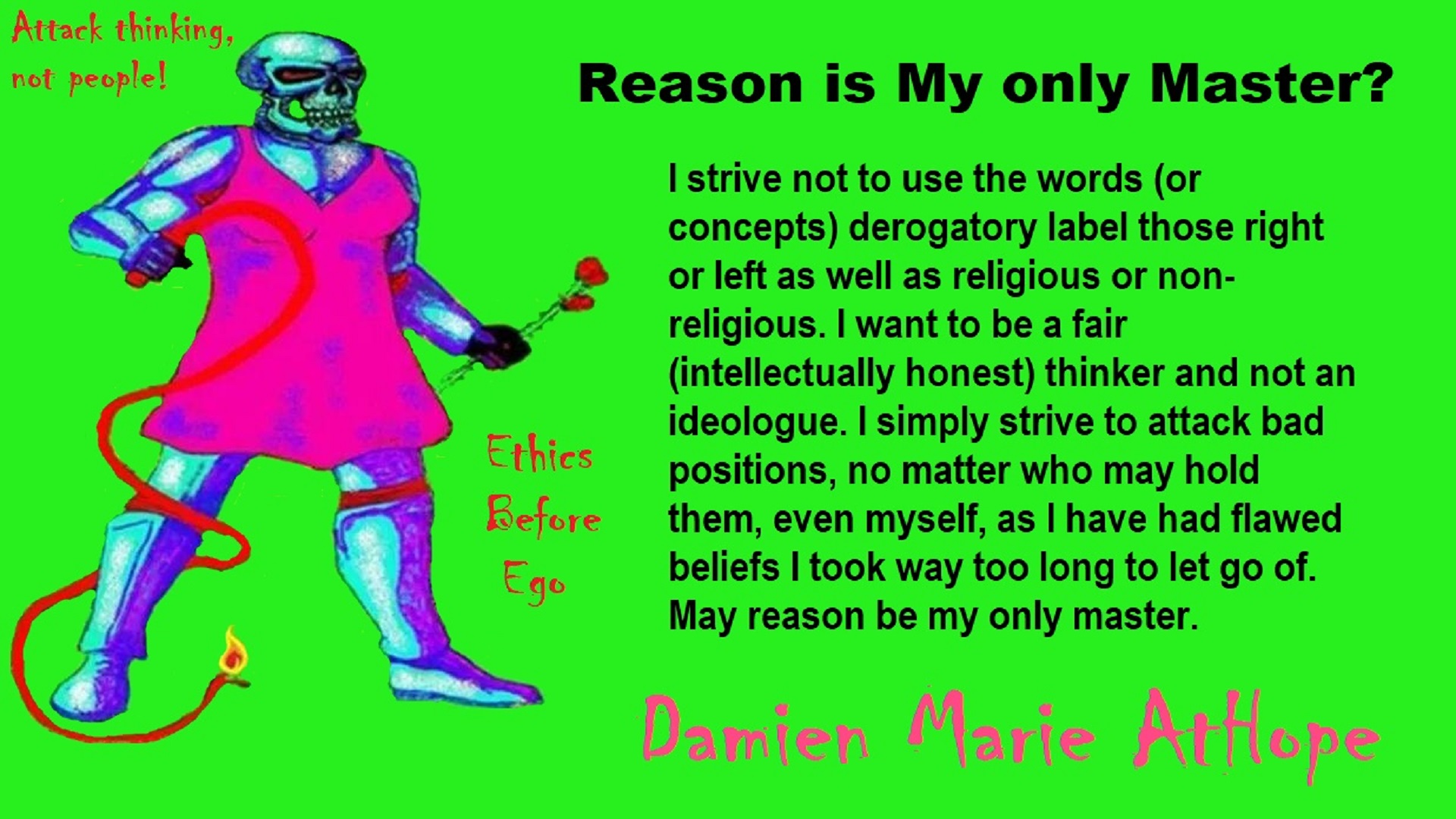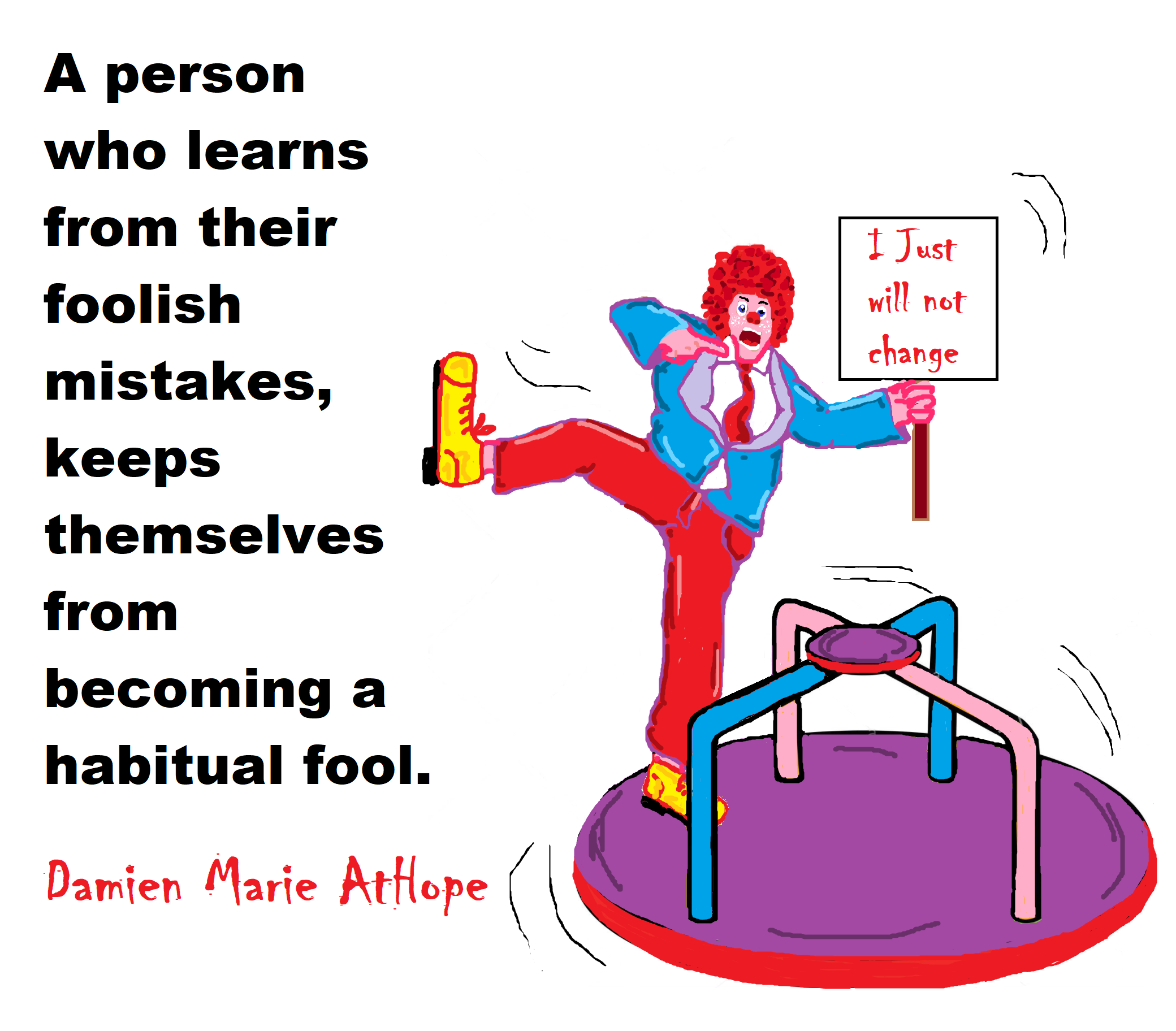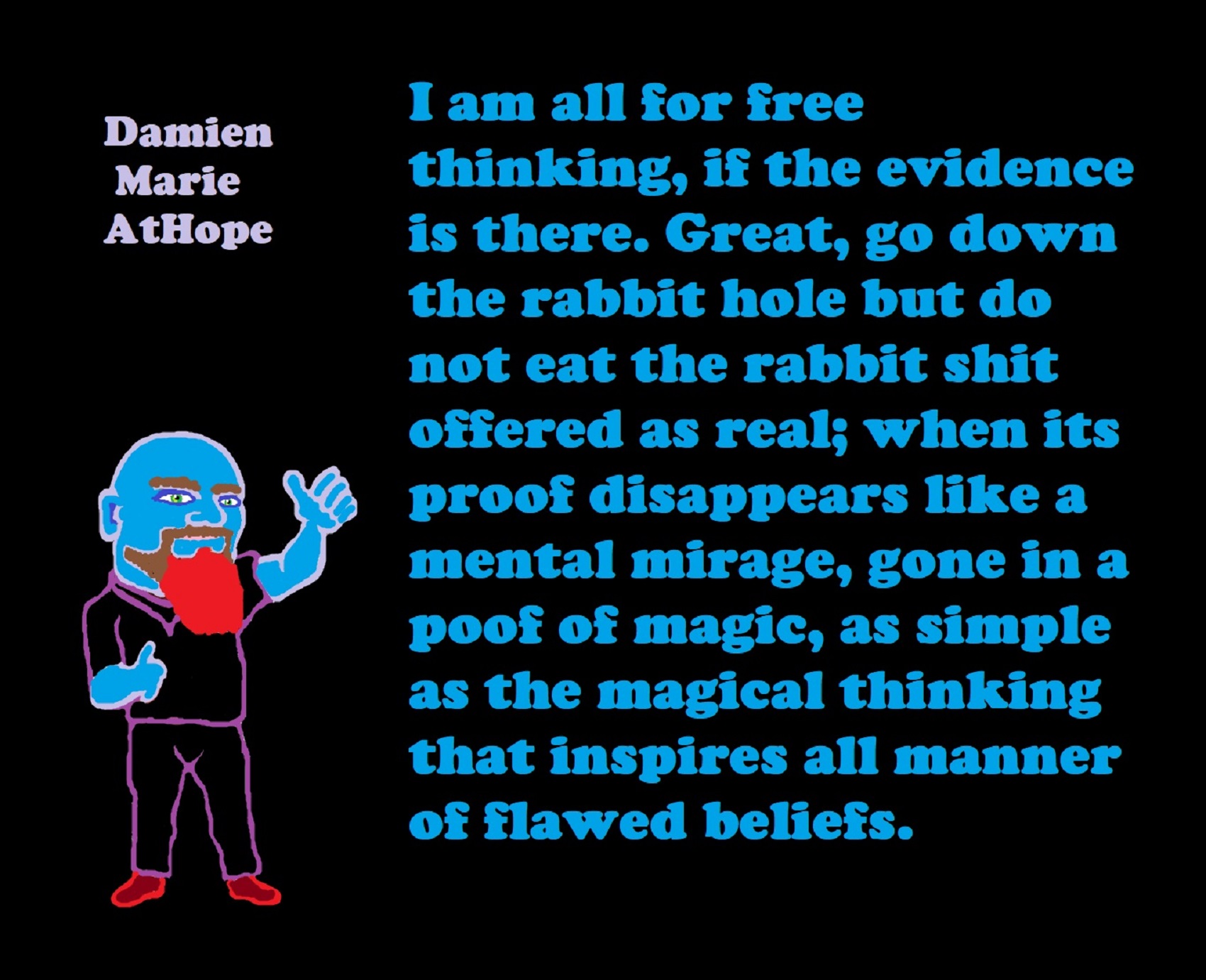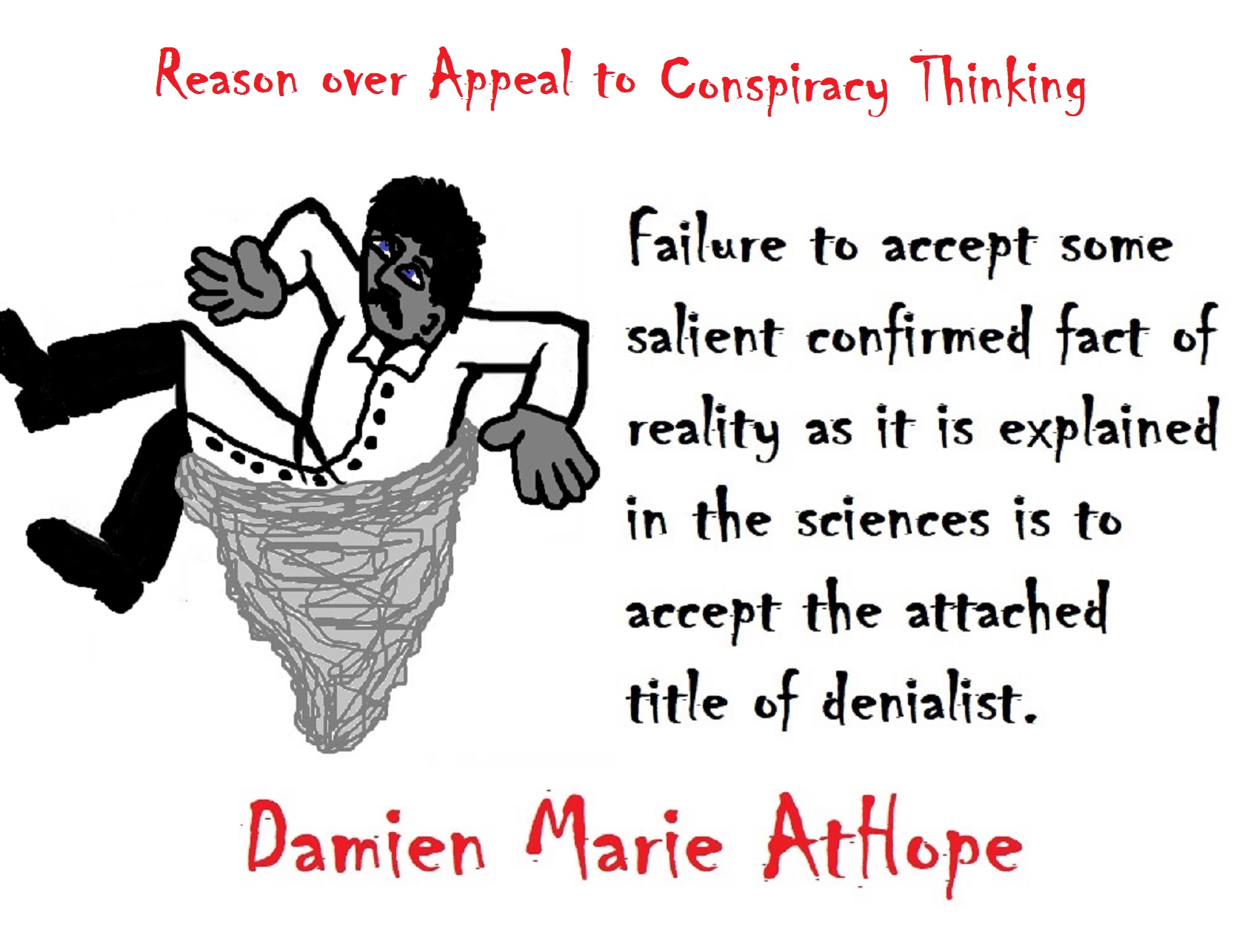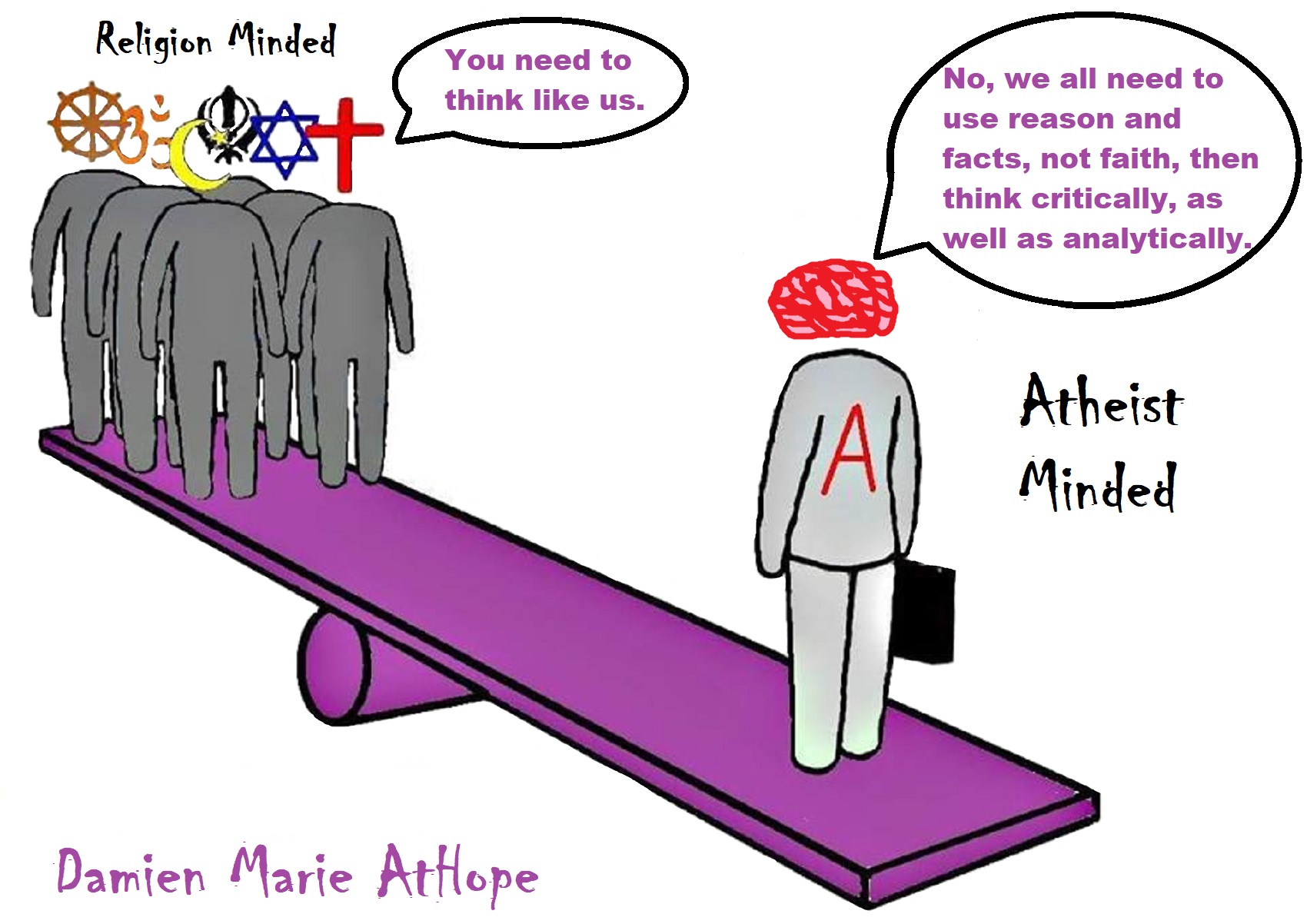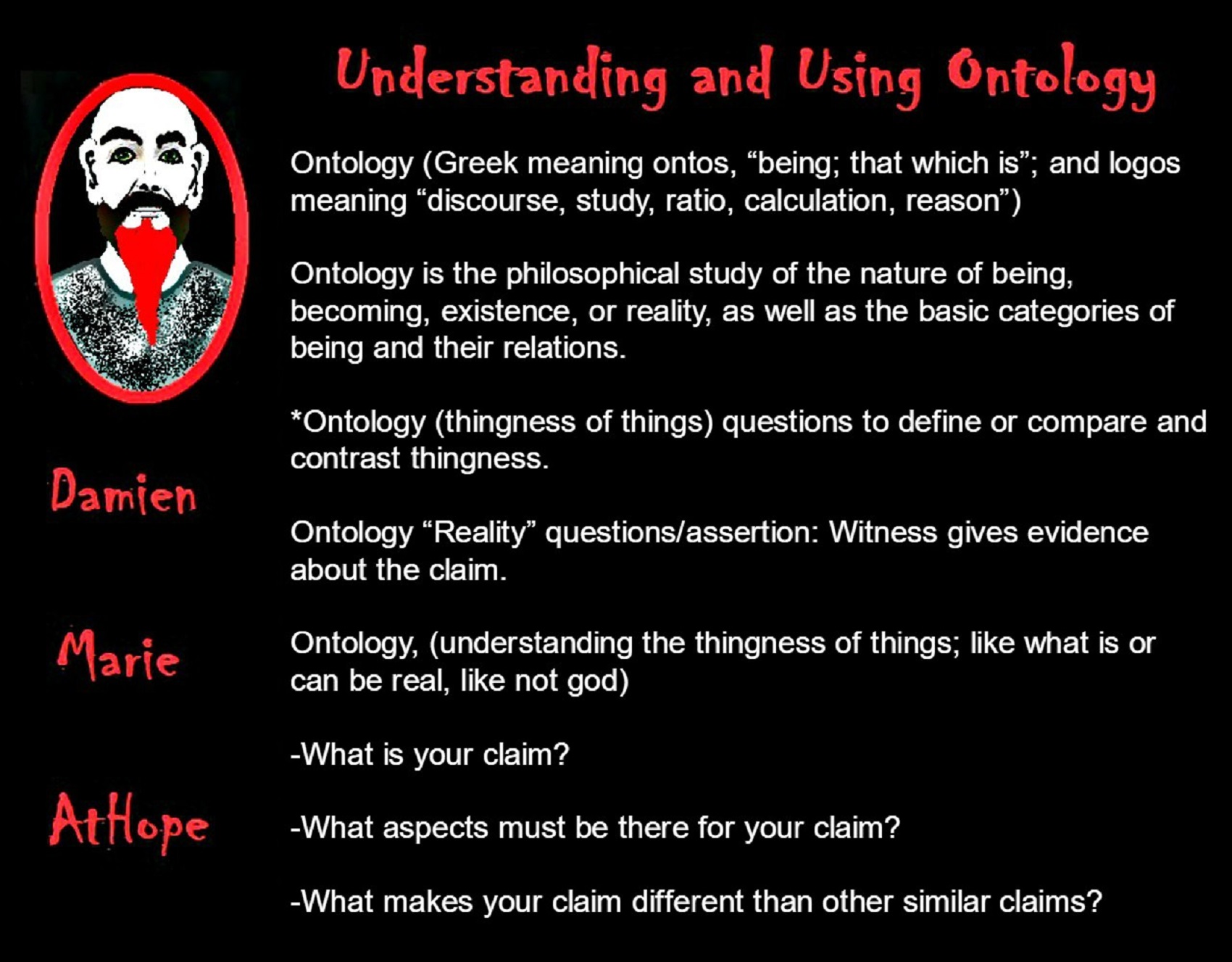
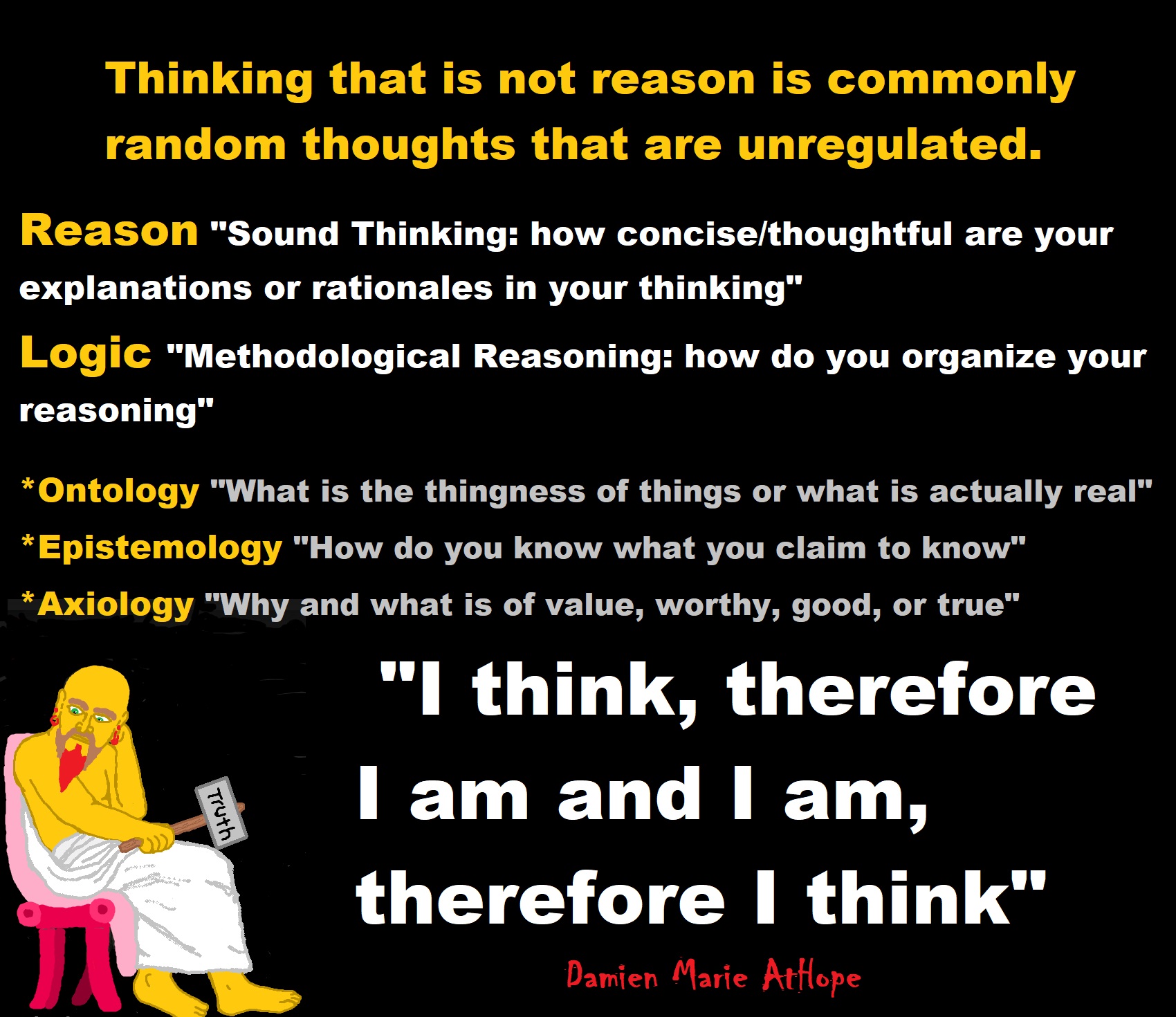
Ontology?
“The compound word ontology can be expressed as the ‘study of being’ or ‘study of that what can or should be thought of as REAL AND EXISTING with ‘logical discourse’. Ontology is the branch of philosophy that studies concepts such as existence, being, becoming, and reality. It includes the questions of how entities are grouped into basic categories and which of these entities exist on the most fundamental level. Ontology is sometimes referred to as the science of being and belongs to the major branch of philosophy known as metaphysics. When used as a countable noun, the terms “ontology” and “ontologies” refer not to the science of being but to theories within the science of being. Ontological theories can be divided into various types according to their theoretical commitments. Monocategorical ontologies hold that there is only one basic category, which is rejected by polycategorical ontologies. Hierarchical ontologies assert that some entities exist on a more fundamental level and that other entities depend on them. Flat ontologies, on the other hand, deny such a privileged status to any entity.” ref
“Ontologists often try to determine what the categories or highest kinds are and how they form a system of categories that provides an encompassing classification of all entities. Commonly proposed categories include substances, properties, relations, states of affairs, and events. These categories are characterized by fundamental ontological concepts, like particularity and universality, abstractness and concreteness, or possibility and necessity. Of special interest is the concept of ontological dependence, which determines whether the entities of a category exist on the most fundamental level. Disagreements within ontology are often about whether entities belonging to a certain category exist and, if so, how they are related to other entities.” ref
“Many philosophers agree that there is an exclusive and exhaustive distinction between concrete objects and abstract objects. Some philosophers consider this to be the most general division of being. Examples of concrete objects include plants, human beings, and planets while things like numbers, sets, and propositions are abstract objects. But despite the general agreement concerning the paradigm cases, there is less consensus as to what the characteristic marks of concreteness and abstractness are. Popular suggestions include defining the distinction in terms of the difference between (1) existence inside or outside space-time, (2) having causes and effects or not, and (3) having contingent or necessary existence.” ref
“An entity ontologically depends on another entity if the first entity cannot exist
without the second entity. Ontologically independent entities, on the other hand, can
exist all by themselves. For example, the surface of an apple cannot exist without the
apple and so depends on it ontologically. Entities often characterized as ontologically
dependent include properties, which depend on their bearers, and boundaries, which
depend on the entity they demarcate from its surroundings. As these examples
suggest, ontological dependence is to be distinguished from causal dependence, in
which an effect depends for its existence on a cause. It is often important to draw a
distinction between two types of ontological dependence: rigid and generic.” ref
“Rigid dependence concerns the dependence on one specific entity, as the surface of
an apple depends on its specific apple. Generic dependence, on the other hand,
involves a weaker form of dependence, on merely a certain type of entity. For
example, electricity generically depends on there being charged particles, but it does
not depend on any specific charged particle. Dependence-relations are relevant to
ontology since it is often held that ontologically dependent entities have a less robust
form of being. This way a hierarchy is introduced into the world that brings with it
the distinction between more and less fundamental entities.” ref
“Identity is a basic ontological concept that is often expressed by the word “same”. It is important to distinguish between qualitative identity and numerical identity. For example, consider two children with identical bicycles engaged in a race while their mother is watching. The two children have the same bicycle in one sense (qualitative identity) and the same mother in another sense (numerical identity). Two qualitatively identical things are often said to be indiscernible. The two senses of sameness are linked by two principles: the principle of indiscernibility of identicals and the principle of identity of indiscernibles.” ref
“The principle of indiscernibility of identicals is uncontroversial and states that if two entities are numerically identical with each other then they exactly resemble each other. The principle of identity of indiscernibles, on the other hand, is more controversial in making the converse claim that if two entities exactly resemble each other then they must be numerically identical. This entails that “no two distinct things exactly resemble each other”. A well-known counterexample comes from Max Black, who describes a symmetrical universe consisting of only two spheres with the same features. Black argues that the two spheres are indiscernible but not identical, thereby constituting a violation of the principle of identity of indiscernibles.” ref
“The problem of identity over time concerns the question of persistence: whether or in what sense two objects at different times can be numerically identical. This is usually referred to as diachronic identity in contrast to synchronic identity. The statement that “[t]he table in the next room is identical with the one you purchased last year” asserts diachronic identity between the table now and the table then. A famous example of a denial of diachronic identity comes from Heraclitus, who argues that it is impossible to step into the same river twice because of the changes that occurred in-between. The traditional position on the problem of persistence is endurantism, the thesis that diachronic identity in a strict sense is possible.” ref
“One problem with this position is that it seems to violate the principle of indiscernibility of identicals: the object may have undergone changes in the meantime resulting in it being discernible from itself. Perdurantism or four-dimensionalism is an alternative approach holding that diachronic identity is possible only in a loose sense: while the two objects differ from each other strictly speaking, they are both temporal parts that belong to the same temporally extended whole. Perdurantism avoids many philosophical problems plaguing endurantism, but endurantism seems to be more in touch with how we ordinarily conceive diachronic identity.” ref
Challenged or Challenging?
All thinkers should know that ontological (thingness) definition require answers and that need to answers in can we confirm or conclude what a god even is could be to as well as if god exists, what is a god, and how or where/how did you acquire such definitions; impossible or possible for a god to exist. “From a confirmed or concluded” you have or do not have well definite if a god to the reality of a god. When anyone talks of challenges they are generally in some way even if only a unstated presupposition will include or involve three things: 1. the ontology (the thingness of things), 2. the epistemology ( how you know what you think you believe or know) and 3. the axiology (what and why of value/worth/good)? The ontology is of core importance to require it by asking for ontological definition or definition. This would make a good first act of fighting without having to fight, by always try starting by making them define the details of any claims but it can be done just as easily for attacks as well. Ontology attacks: slow down and unpack any claims, “you said you know god is real.” What do you mean by the qualities, attribution, or thingness of the things involved in the term god or what do you know about the term god and is an estimate for the faith reality you agree to believe in. Ontology defense: slow down and unpack any attacks, “you said I can’t be moral or good without god.” What do you mean by the qualities, attribution, or thingness of the things involved in the term god or morality? Simply, ontology is a universal investigation pinpoint. Ontology is likely what is being addressed or is involved when the reality confirmed by science, and the scientific method is generally employs several philosophy tools realized or not and they are mainly rationalism, empiricism and skepticism/fallibilism and/or falsificationism.
Grasping the status of truth (ontology of truth): https://damienmarieathope.com/2016/09/18/grasping-the-status-of-truth-ontology-of-truth/
Ontology, Epistemology, & Axiology argument/challenge protocol: https://damienmarieathope.com/2016/10/13/ontology-epistemology-axiology-argumentchallenge-protocol/
To me, belief ontologies address the conceptual schemas involved, at the intersection of three elements: a belief is a thinking system with a susceptibility to flaws, use ontological challenging or ontological disproofs which are logical arguments against by attacker/challenger access to the flaw, and attacker capability to exploit the flaw. Ontological disproofs, are sophisticated ontological arguments, ontological challenges or ontological disproofs accusations that demand equally sophisticated responses, to which, many people are unprepared. Belief or argument forms should be valid, to prove them sound or unsound, strong/weak, or well defined/undefined, as weak premises must be shown to be false. By use ontological challenging, you are shining a light on its ways claimed or points proposed, outlined or arranged which equals a thing or its qualities to define it that makes the depth and fullness to a being or thing, like just what is provisional about the thing in question or offer, are the characteristics of adequate development structure and infrastructure of the ontology involved in claims or propositions as truth, fact, or knowledge? One ontological criticism focuses on the semantics that are given for quantifiers qualities used or involved as the notation of the language representations of the contents of belief talk, proposing that the qualities offered are fully alike (unequivocal) when the items or properties identified to you are likely one of the three partly unlike (equivocal). To me, ontologies are like an adequate way or web of elements involved in the thingness of things or ideas. Point by slow methodological point, is the most effective way to use ontological challenging. Ontologically challenge needs to be done, in order to develop in the other person, an ontological insecurity about what the person, place, thing, or idea are construction of and just what is being claimed, portrayed or proposed as truth, fact, or knowledge? A belief or set of beliefs, likely have a relationship between ideas of the thing expose the cracks and fissure in the conceptualizations divided up or overlap but often while a belief or set of beliefs are offered with assurance, they instead ontologically inadequate or almost completely ontologically empty. By exposing ontological volnurniblities or weakness in a belief or set of beliefs can rise person’s sense of ontological Insecurity as the thinker realized they may not know that that know. In my way of thinking as ontological insecurity refers or relates to in an existential sense a person’s sense of “belief” deflation, discrediting, or disproving. Such an ontologically insecure thinker, may be so ontologically desperate, to stop/lower believing/accepting the level of “reality or existence” of the things or ideas they were just referring to. In contrast, the ontologically secure thinker, may be so ontologically stable in relation to ontological commitment of their fragments involved to feel a high level. Ontological arguments or Ontological commitment need to demonstrate or require demonstration of the disciplined or disordered structures but, a priori and necessary premises to the conclusion
Ontological commitment structures:
*similarity vs logic: this is the difference between matchings (predicating about the similarity of ontology terms), and mappings (logical axioms, typically expressing logical equivalence or inclusion among ontology terms)
*atomic vs complex: whether the alignments we considered are one-to-one, or can involve more terms in a query-like formulation (e.g., LAV/GAV mapping)
*homogeneous vs heterogeneous: do the alignments predicate on terms of the same type (e.g., classes are related only to classes, individuals to individuals, etc.) or we allow heterogeneity in the relationship?
*type of alignment: the semantics associated to an alignment, assumption, equivalence, discontinues, part-of or any user-specified relationship.
https://en.wikipedia.org/wiki/Ontology_alignment
Many arguments fall under the category of the ontological, and they tend to involve arguments about the state of being or existing. More specifically, ontological arguments tend to start with an a priori theory about the organization of the universe. If that organizational structure is true, the argument will provide reasons why God must exist. Ontological disproofs are logical arguments against of the existence of a thing based on what it would be if it existed. These arguments are very important because they do not simply purport to prove that god(s) does not exist (like, say, the Easter Bunny or Martians), but that God cannot exist (like a square circle or a married bachelor). The basic form of these arguments is something like this:
If God exists, he must be like ‘X’. [Here ‘X’ = some attribute(s) of God, e.g., he must be good, loving, omnipotent, etc.].
‘X’ is actually impossible.
Therefore, god(s) cannot exist.
The traditional definition of an ontological argument contrasted the ontological argument (literally any argument “concerned with being”) with the cosmological and physio-theoretical arguments. According to the Kantian view, ontological arguments are those founded on a priori reasoning. Graham Oppy, who holds the view that he “see[s] no urgent reason” to depart from the traditional definition, defined ontological arguments as those that begin with “nothing but analytic, a priori and necessary premises” and conclude that God exists. Oppy admitted, however, that not all of the “traditional characteristics” of an ontological argument (analyticity, necessity, and a priority) are found in all ontological arguments and, in his 2007 work Ontological Arguments and Belief in God, suggested that a better definition of an ontological argument would employ only considerations “entirely internal to the theistic worldview”. Oppy subclassified ontological arguments into definitional, conceptual (or hyperintensional), modal, Meinongian, experiential, mereological, higher-order, or Hegelian categories, based on the qualities of their premises. He defined these qualities as follows: definitional arguments invoke definitions; conceptual arguments invoke “the possession of certain kinds of ideas or concepts”; modal arguments consider possibilities; Meinongian arguments assert “a distinction between different categories of existence”; experiential arguments employ the idea that God exists solely to those who have had experience of him; and Hegelian arguments are from Hegel. He later categorized mereological as arguments that “draw on… the theory of the whole-part relation”. William Lane Craig criticized Oppy’s study as too vague for useful classification. Craig argued that an argument can be classified as ontological if it attempts to deduce the existence of God, along with other necessary truths, from his definition. He suggested that proponents of ontological arguments would claim that, if one fully understood the concept of God, one must accept his existence. William L. Rowe defined ontological arguments as those that start from the definition of God and, using only a priori principles, conclude with God’s existence. https://en.wikipedia.org/wiki/Ontological_argument
In information science, an upper, top-level, or foundation ontology is an ontology which consists of very general terms (such as “object”, “property”, “relation”) that are common across all domains. An important function of an upper ontology is to support broad semantic interoperability among a large number of domain-specific ontologies by providing a common starting point for the formulation of definitions. Terms in the domain ontology are ranked “under” the terms in the upper ontology, and the former stand to the latter in subclass relations. A number of upper ontologies proposed, each with its own proponents. Each upper ontology can be considered as a computational implementation of natural philosophy, which itself is a more empirical method for investigating the topics within the philosophical discipline of physical ontology. Arguments for the infeasibility of an upper ontology: Historically, many attempts in many societies have been made to impose or define a single set of concepts as more primal, basic, foundational, authoritative, true or rational than all others. A common objection to such attempts points out that humans lack the sort of transcendent perspective – or God’s eye view – that would be required to achieve this goal. Humans are bound by language or culture, and so lack the sort of objective perspective from which to observe the whole terrain of concepts and derive any one standard. Another objection is the problem of formulating definitions. Top level ontologies are designed to maximize support for interoperability across a large number of terms. Such ontologies must therefore consist of terms expressing very general concepts, but such concepts are so basic to our understanding that there is no way in which they can be defined, since the very process of definition implies that a less basic (and less well understood) concept is defined in terms of concepts that are more basic and so (ideally) more well understood. Very general concepts can often only be elucidated, for example by means of examples, or paraphrase.
There is no self-evident way of dividing the world up into concepts, and certainly no non-controversial one
There is no neutral ground that can serve as a means of translating between specialized (or “lower” or “application-specific”) ontologies
Human language itself is already an arbitrary approximation of just one among many possible conceptual maps. To draw any necessary correlation between English words and any number of intellectual concepts we might like to represent in our ontologies is just asking for trouble. (WordNet, for instance, is successful and useful precisely because it does not pretend to be a general-purpose upper ontology; rather, it is a tool for semantic / syntactic / linguistic disambiguation, which is richly embedded in the particulars and peculiarities of the English language.) Any hierarchical or topological representation of concepts must begin from some ontological, epistemological, linguistic, cultural, and ultimately pragmatic perspective. Such pragmatism does not allow for the exclusion of politics between persons or groups, indeed it requires they be considered as perhaps more basic primitives than any that are represented. Those who doubt the feasibility of general purpose ontologies are more inclined to ask “what specific purpose do we have in mind for this conceptual map of entities and what practical difference will this ontology make?” This pragmatic philosophical position surrenders all hope of devising the encoded ontology version of “everything that is the case.” Finally, there are objections similar to those against artificial intelligence. Technically, the complex concept acquisition and the social / linguistic interactions of human beings suggests any axiomatic foundation of “most basic” concepts must be cognitive, biological or otherwise difficult to characterize since we don’t have axioms for such systems. Ethically, any general-purpose ontology could quickly become an actual tyranny by recruiting adherents into a political program designed to propagate it and its funding means, and possibly defend it by violence. Historically, inconsistent and irrational belief systems have proven capable of commanding obedience to the detriment or harm of persons both inside and outside a society that accepts them. How much more harmful would a consistent rational one be, were it to contain even one or two basic assumptions incompatible with human life? Many of those who doubt the possibility of developing wide agreement on a common upper ontology fall into one of two traps:
they assert that there is no possibility of universal agreement on any conceptual scheme; but they argue that a practical common ontology does not need to have universal agreement, it only needs a large enough user community (as is the case for human languages) to make it profitable for developers to use it as a means to general interoperability, and for third-party developer to develop utilities to make it easier to use; and
they point out that developers of data schemes find different representations congenial for their local purposes; but they do not demonstrate that these different representation are in fact logically inconsistent.
In fact, different representations of assertions about the real world (though not philosophical models), if they accurately reflect the world, must be logically consistent, even if they focus on different aspects of the same physical object or phenomenon. If any two assertions about the real world are logically inconsistent, one or both must be wrong, and that is a topic for experimental investigation, not for ontological representation. In practice, representations of the real world are created as and known to be approximations to the basic reality, and their use is circumscribed by the limits of error of measurements in any given practical application. Ontologies are entirely capable of representing approximations, and are also capable of representing situations in which different approximations have different utility. Objections based on the different ways people perceive things attack a simplistic, impoverished view of ontology. The objection that there are logically incompatible models of the world are true, but in an upper ontology those different models can be represented as different theories, and the adherents of those theories can use them in preference to other theories, while preserving the logical consistency of the necessary assumptions of the upper ontology. The necessary assumptions provide the logical vocabulary with which to specify the meanings of all of the incompatible models. It has never been demonstrated that incompatible models cannot be properly specified with a common, more basic set of concepts, while there are examples of incompatible theories that can be logically specified with only a few basic concepts. Many of the objections to upper ontology refer to the problems of life-critical decisions or non-axiomatized problem areas such as law or medicine or politics that are difficult even for humans to understand. Some of these objections do not apply to physical objects or standard abstractions that are defined into existence by human beings and closely controlled by them for mutual good, such as standards for electrical power system connections or the signals used in traffic lights. No single general metaphysics is required to agree that some such standards are desirable. For instance, while time and space can be represented many ways, some of these are already used in interoperable artifacts like maps or schedules. Objections to the feasibility of a common upper ontology also do not take into account the possibility of forging agreement on an ontology that contains all of the primitive ontology elements that can be combined to create any number of more specialized concept representations. Adopting this tactic permits effort to be focused on agreement only on a limited number of ontology elements. By agreeing on the meanings of that inventory of basic concepts, it becomes possible to create and then accurately and automatically interpret an infinite number of concept representations as combinations of the basic ontology elements. Any domain ontology or database that uses the elements of such an upper ontology to specify the meanings of its terms will be automatically and accurately interoperable with other ontologies that use the upper ontology, even though they may each separately define a large number of domain elements not defined in other ontologies. In such a case, proper interpretation will require that the logical descriptions of domain-specific elements be transmitted along with any data that is communicated; the data will then be automatically interpretable because the domain element descriptions, based on the upper ontology, will be properly interpretable by any system that can properly use the upper ontology. In effect elements in different domain ontologies can be *translated* into each other using the common upper ontology. An upper ontology based on such a set of primitive elements can include alternative views, provided that they are logically compatible. Logically incompatible models can be represented as alternative theories, or represented in a specialized extension to the upper ontology. The proper use of alternative theories is a piece of knowledge that can itself be represented in an ontology. Users that develop new domain ontologies and find that there are semantic primitives needed for their domain but missing from the existing common upper ontology can add those new primitives by the accepted procedure, expanding the common upper ontology as necessary. Most proponents[who?] of an upper ontology argue that several good ones may be created with perhaps different emphasis. Very few are actually arguing to discover just one within natural language or even an academic field. Most are simply standardizing some existing communication. Another view advanced is that there is almost total overlap of the different ways that upper ontologies have been formalized, in the sense that different ontologies focus on a different aspect of the same entities, but the different views are complementary and not contradictory to each other; as a result, an internally consistent ontology that contains all the views, with means of translating the different views into the other, is feasible. Such an ontology has not thus far been constructed, however, because it would require a large project to develop so as to include all of the alternative views in the separately developed upper ontologies, along with their translations. The main barrier to construction of such an ontology is not the technical issues, but the reluctance of funding agencies to provide the funds for a large enough consortium of developers and users. Several common arguments against upper ontology can be examined more clearly by separating issues of concept definition (ontology), language (lexicons), and facts (knowledge). For instance, people have different terms and phrases for the same concept. However, that does not necessarily mean that those people are referring to different concepts. They may simply be using different language or idiom. Formal ontologies typically use linguistic labels to refer to concepts, but the terms that label ontology elements mean no more and no less than what their axioms say they mean. Labels are similar to variable names in software, evocative rather than definitive. The proponents of a common upper ontology point out that the meanings of the elements (classes, relations, rules) in an ontology depend only on their logical form, and not on the labels, which are usually chosen merely to make the ontologies more easily usable by their human developers. In fact, the labels for elements in an ontology need not be words – they could be, for example, images of instances of a particular type, or videos of an action that is represented by a particular type. It cannot be emphasized too strongly that words are *not* what are represented in an ontology, but entities in the real world, or abstract entities (concepts) in the minds of people. Words are not equivalent to ontology elements, but words *label* ontology elements. There can be many words that label a single concept, even in a single language (synonymy), and there can be many concepts labeled by a single word (ambiguity). Creating the mappings between human language and the elements of an ontology is the province of Natural Language Understanding. But the ontology itself stands independently as a logical and computational structure. For this reason, finding agreement on the structure of an ontology is actually easier than developing a controlled vocabulary, because all different interpretations of a word can be included, each *mapped* to the same word in the different terminologies. A second argument is that people believe different things, and therefore can’t have the same ontology. However, people can assign different truth values to a particular assertion while accepting the validity of certain underlying claims, facts, or way of expressing an argument with which they disagree. (Using, for instance, the issue/position/argument form.) This objection to upper ontologies ignores the fact that a single ontology can represent different belief systems, representing them as different belief systems, without taking a position on the validity of either. Even arguments about the existence of a thing require a certain sharing of a concept, even though its existence in the real world may be disputed. Separating belief from naming and definition also helps to clarify this issue, and show how concepts can be held in common, even in the face of differing belief. For instance, wiki as a medium may permit such confusion but disciplined users can apply dispute resolution methods to sort out their conflicts. It is also argued that most people share a common set of “semantic primitives”, fundamental concepts, to which they refer when they are trying to explain unfamiliar terms to other people. An ontology that includes representations of those semantic primitives could in such a case be used to create logical descriptions of any term that a person may wish to define logically. That ontology would be one form of upper ontology, serving as a logical “interlingua” that can translate ideas in one terminology to its logical equivalent in another terminology. Advocates[who?] argue that most disagreement about the viability of an upper ontology can be traced to the conflation of ontology, language and knowledge, or too-specialized areas of knowledge: many people, or agents or groups will have areas of their respective internal ontologies that do not overlap. If they can cooperate and share a conceptual map at all, this may be so very useful that it outweighs any disadvantages that accrue from sharing. To the degree it becomes harder to share concepts the deeper one probes, the more valuable such sharing tends to get. If the problem is as basic as opponents of upper ontologies claim, then, it also applies to a group of humans trying to cooperate, who might need machine assistance to communicate easily. If nothing else, such ontologies are implied by machine translation, used when people cannot practically communicate. Whether “upper” or not, these seem likely to proliferate.
Objections to Ontological Arguments
Objections to ontological arguments take many forms. Some objections are intended to apply only to particular ontological arguments, or particular forms of ontological arguments; other objections are intended to apply to all ontological arguments. It is a controversial question whether there are any successful general objections to ontological arguments.
One general criticism of ontological arguments which have appeared hitherto is this: none of them is persuasive, i.e., none of them provides those who do not already accept the conclusion that God exists—and who are reasonable, reflective, well-informed, etc.—with either a pro tanto reason or an all-things-considered reason to accept that conclusion. Any reading of any ontological argument which has been produced so far which is sufficiently clearly stated to admit of evaluation yields a result which is invalid, or possesses a set of premises which it is clear in advance that no reasonable, reflective, well-informed, etc. non-theists will accept, or has a benign conclusion which has no religious significance, or else falls prey to more than one of the above failings.
For each of the families of arguments introduced in the earlier taxonomy, we can give general reasons why arguments of that family fall under the general criticism. In what follows, we shall apply these general considerations to the exemplar arguments introduced in section 2.
(1) Definitional arguments: These are arguments in which ontologically committing vocabulary is introduced solely via a definition. An obvious problem is that claims involving that vocabulary cannot then be non-question-beggingly detached from the scope of that definition. (The inference from ‘By definition, God is an existent being’ to ‘God exists’ is patently invalid; while the inference to ‘By definition, God exists’ is valid, but uninteresting. In the example given earlier, the premises licence the claim that, as a matter of definition, God possesses the perfection of existence. But, as just noted, there is no valid inference from this claim to the further claim that God exists.)
(2) Conceptual arguments: These are arguments in which ontologically committing vocabulary is introduced solely within the scope of hyperintensional operators (e.g. ‘believes that’, ‘conceives of’, etc.). Often, these operators have two readings, one of which can cancel ontological commitment, and the other of which cannot. On the reading which can give cancellation (as in the most likely reading of ‘John believes in Santa Claus’), the inference to a conclusion in which the ontological commitment is not cancelled will be invalid. On the reading which cannot cancel ontological commitment (as in that reading of ‘John thinks about God’ which can only be true if there is a God to think about), the premises are question-begging: they incur ontological commitments which non-theists reject. In our sample argument, the claim, that I conceive of an existent being than which no greater being can be conceived, admits of the two kinds of readings just distinguished. On the one hand, on the reading which gives cancellation, the inference to the conclusion that there is a being than which no greater can be conceived is plainly invalid. On the other hand, on the reading in which there is no cancellation, it is clear that this claim is one which no reasonable, etc. non-theist will accept: if you doubt that there is a being than which no greater can be conceived, then, of course, you doubt whether you can have thoughts about such a being.
(3) Modal arguments: These are arguments with premises which concern modal claims about God, i.e., claims about the possibility or necessity of God’s attributes and existence. Suppose that we agree to think about possibility and necessity in terms of possible worlds: a claim is possibly true just in case it is true in at least one possible world; a claim is necessarily true just in case it is true in every possible world; and a claim is contingent just in case it is true in some possible worlds and false in others. Some theists hold that God is a necessarily existent being, i.e., that God exists in every possible world. Non-theists do not accept the claim that God exists in the actual world. Plainly enough, non-theists and necessitarian theists disagree about the layout of logical space, i.e., the space of possible worlds. The sample argument consists, in effect, of two premises: one which says that God exists in at least one possible world; and one which says that God exists in all possible worlds if God exists in any. It is perfectly obvious that no non-theist can accept this pair of premises. Of course, a non-theist can allow—if they wish—that there are possible worlds in which there are contingent Gods. However, it is quite clear that no rational, reflective, etc. non-theist will accept the pair of premises in the sample argument.
(4) Meinongian arguments: These are arguments which depend somehow or other on Meinongian theories of objects. Consider the schema ‘The F G is F’. Naive Meinongians will suppose that if F is instantiated with any property, then the result is true (and, quite likely, necessary, analytic and a priori). So, for example, the round square is round; the bald current King of France is bald; and so on. However, more sophisticiated Meinongians will insist that there must be some restriction on the substitution instances for F, in order to allow one to draw the obvious and important ontological distinction between the following two groups: {Bill Clinton, the sun, the Eiffel Tower} and {Santa Claus, Mickey Mouse, the round square}. Choice of vocabulary here is controversial: Let us suppose (for the sake of example) that the right thing to say is that the former things exist and the latter do not. Under this supposition, ‘existent’ will not be a suitable substitution instance for F—obviously, since we all agree that there is no existent round square. Of course, nothing hangs on the choice of ‘existent’ as the crucial piece of vocabulary. The point is that non-theists are not prepared to include god(s) in the former group of objects—and hence will be unpersuaded by any argument which tries to use whatever vocabulary is used to discriminate between the two classes as the basis for an argument that god(s) belong to the former group. (Cognoscenti will recognise that the crucial point is that Meinongian ontological arguments fail to respect the distinction between nuclear (assumptible, characterising) properties and non-nuclear (non-assumptible, non-characterising) properties. It should, of course, be noted that neither Meinong, nor any of his well-known modern supporters—e.g. Terence Parsons, Richard Sylvan—ever endorses a Meinongian ontological argument; and it should also be noted that most motivate the distinction between nuclear and non-nuclear properties in part by a need to avoid Meinongian ontological arguments. The reason for calling these arguments “Meinongian” is that they rely on quantification over—or reference to—non-existent objects; there is no perjorative intent in the use of this label.)
(5) Experiential arguments: These are arguments which try to make use of ‘externalist’ or ‘object-involving’ accounts of content. It should not be surprising that they fail. After all, those accounts of content need to have something to say about expressions which fail to refer (‘Santa Claus’, ‘phlogiston’, etc.). But, however the account goes, non-theists will insist that expressions which purport to refer to god(s) should be given exactly the same kind of treatment.
(6) Mereological arguments: Those who dislike mereology will not be impressed by these arguments. However, even those who accept principles of unrestricted composition—i.e., who accept principles which claim, e.g., that, whenever there are some things, there is something which is the sum or fusion of all of those things—need not be perturbed by them: for it is plausible to think that the conclusions of these arguments have no religious significance whatsoever—they are merely arguments for, e.g., the existence of the physical universe.
(7) Higher-Order arguments: The key to these arguments is the observation that any collection of properties, that (a) does not include all properties and (b) is closed under entailment, is possibly jointly instantiated. If it is impossible that God exists — as all who deny that God exists suppose, on the further assumption that, were God to exist, God would exist of necessity — then it cannot be true both that the God-properties are closed under entailment and that there are properties that are not God-properties. Those who take themselves to have good independent reason to deny that there are any gods will take themselves to have good independent reason to deny that there are God-properties that form a non-trivial collection that is closed under entailment.
Even if the forgoing analyses are correct, it is important to note that no argument has been given for the conclusion that no ontological argument can be successful. Even if all of the kinds of arguments produced to date are pretty clearly unsuccessful—i.e., not such as ought to give non-theists reason to accept the conclusion that God exists—it remains an open question whether there is some other kind of hitherto undiscovered ontological argument which does succeed. (Perhaps it is worth adding here that there is fairly widespread consensus, even amongst theists, that no known ontological arguments for the existence of God are persuasive. Most categories of ontological argument have some actual defenders; but none has a large following.)
Many other objections to (some) ontological arguments have been proposed. All of the following have been alleged to be the key to the explanation of the failure of (at least some) ontological arguments: (1) existence is not a predicate (see, e.g., Kant, Smart 1955, Alston 1960); (2) the concept of god is meaningless/incoherent/ inconsistent (see, e.g., Findlay 1949); (3) ontological arguments are ruled out by “the missing explanation argument” (see Johnston 1992; (4) ontological arguments all trade on mistaken uses of singular terms (see, e.g., Barnes 1972; (5) existence is not a perfection (see almost any textbook in philosophy of religion); (6) ontological arguments presuppose a Meinongian approach to ontology (see, e.g., Dummett 1993); and (7) ontological arguments are question-begging, i.e., presuppose what they set out to prove (see, e.g., Rowe 1989). There are many things to say about these objections: the most important point is that almost all of them require far more controversial assumptions than non-theists require in order to be able to reject ontological arguments with good conscience. Trying to support most of these claims merely in order to beat up on ontological arguments is like using a steamroller to crack a nut (in circumstances in which one is unsure that one can get the steamroller to move!).
Of course, all of the above discussion is directed merely to the claim that ontological arguments are not dialectically efficacious—i.e., they give reasonable non-theists no reason to change their views. It might be wondered whether there is some other use which ontological arguments have—e.g., as Plantinga claims, in establishing the reasonableness of theism. This seems unlikely. After all, at best these arguments show that certain sets of sentences (beliefs, etc.) are incompatible—one cannot reject the conclusions of these arguments while accepting their premises. But the arguments themselves say nothing about the reasonableness of accepting the premisses. So the arguments themselves say nothing about the (unconditional) reasonableness of accepting the conclusions of these arguments. Those who are disposed to think that theism is irrational need find nothing in ontological arguments to make them change their minds (and those who are disposed to think that theism is true should take no comfort from them either).
- Parodies of Ontological Arguments
Positive ontological arguments—i.e., arguments FOR the existence of god(s)—invariably admit of various kinds of parodies, i.e., parallel arguments which seem at least equally acceptable to non-theists, but which establish absurd or contradictory conclusions. For many positive ontological arguments, there are parodies which purport to establish the non-existence of god(s); and for many positive ontological arguments there are lots (usually a large infinity!) of similar arguments which purport to establish the existence of lots (usally a large infinity) of distinct god-like beings. Here are some modest examples:
(1) By definition, God is a non-existent being who has every (other) perfection. Hence God does not exist.
(2) I conceive of a being than which no greater can be conceived except that it only ever creates n universes. If such a being does not exist, then we can conceive of a greater being—namely, one exactly like it which does exist. But I cannot conceive of a being which is greater in this way. Hence, a being than which no greater can be conceived except that it only ever creates n universes exists.
(3) It is possible that God does not exist. God is not a contingent being, i.e., either it is not possible that God exists, or it is necessary that God exists. Hence it is not possible that God exists. Hence God does not exist.
(4) It is analytic, necessary, and a priori that the F G is F. Hence, the existent perfect being who creates exactly n universes is existent. Hence the perfect being who creates exactly n universes exists.
There are many kinds of parodies on Ontological Arguments. The aim is to construct arguments which non-theists can reasonably claim to have no more reason to accept than the original Ontological Arguments themselves. Of course, theists may well be able to hold that the originals are sound, and the parodies not—but that is an entirely unrelated issue. (All theists—and no non-theists—should grant that the following argument is sound, given that the connectives are to be interpretted classically: “Either 2+2=5, or God exists. Not 2+2=5. Hence God exists.” It should be completely obvious that this argument is useless.)
There are some very nice parodic discussions of Ontological Arguments in the literature. A particularly pretty one is due to Raymond Smullyan (1984), in which the argument is attributed to “the unknown Dutch theologian van Dollard”. A relatively recent addition to the genre is described in Grey 2000, though the date of its construction is uncertain. It is the work of Douglas Gasking, one-time Professor of Philosophy at the University of Melbourne (with emendations by William Grey and Denis Robinson):
The creation of the world is the most marvellous achievement imaginable.
The merit of an achievement is the product of (a) its intrinsic quality, and (b) the ability of its creator.
The greater the disability or handicap of the creator, the more impressive the achievement.
The most formidable handicap for a creator would be non-existence.
Therefore, if we suppose that the universe is the product of an existent creator, we can conceive a greater being—namely, one who created everything while not existing.
An existing God, therefore, would not be a being than which a greater cannot be conceived, because an even more formidable and incredible creator would be a God which did not exist.
(Hence) God does not exist.
This parody—at least in its current state—seems to me to be inferior to other parodies in the literature, including the early parodies of Gaunilo and Caterus. To mention but one difficulty, while we might suppose that it would be a greater achievement to create something if one did not exist than if one did exist, it doesn’t follow from this that a non-existent creator is greater (qua being) than an existent creator. Perhaps it might be replied that this objection fails to take the first premise into account: if the creation of the world really is “the most marvellous achievement imaginable”, then surely there is some plausibility to the claim that the creator must have been non-existent (since that would make the achievement more marvellous than it would otherwise have been). But what reason is there to believe that the creation of the world is “the most marvellous achievement imaginable”, in the sense which is required for this argument? Surely it is quite easy to imagine even more marvellous achievements—e.g., the creation of many worlds at least as good as this one! (Of course, one might also want to say that, in fact, one cannot conceive of a non-existent being’s actually creating something: that is literally inconceivable. Etc.) Chambers 2000 and Siegwart 2014 provide nice, recent discussions of Gaunilo’s parody of the Proslogion II argument. https://plato.stanford.edu/entries/ontological-arguments/




“Theists, there has to be a god, as something can not come from nothing.”
Well, thus something (unknown) happened and then there was something. This does not tell us what the something that may have been involved with something coming from nothing. A supposed first cause, thus something (unknown) happened and then there was something is not an open invitation to claim it as known, neither is it justified to call or label such an unknown as anything, especially an unsubstantiated magical thinking belief born of mythology and religious storytelling.


While hallucinogens are associated with shamanism, it is alcohol that is associated with paganism.
The Atheist-Humanist-Leftist Revolutionaries Shows in the prehistory series:
Show two: Pre-animism 300,000 years old and animism 100,000 years old: related to “Anarchism and Socialism”
Show tree: Totemism 50,000 years old: related to “Anarchism and Socialism”
Show four: Shamanism 30,000 years old: related to “Anarchism and Socialism”
Show five: Paganism 12,000 years old: related to “Anarchism and Socialism”
Show six: Emergence of hierarchy, sexism, slavery, and the new male god dominance: Paganism 7,000-5,000 years old: related to “Anarchism and Socialism” (Capitalism) (World War 0) Elite and their slaves!
Prehistory: related to “Anarchism and Socialism” the division of labor, power, rights, and recourses: VIDEO
Pre-animism 300,000 years old and animism 100,000 years old: related to “Anarchism and Socialism”: VIDEO
Totemism 50,000 years old: related to “Anarchism and Socialism”: VIDEO
Shamanism 30,000 years old: related to “Anarchism and Socialism”: VIDEO
Paganism 12,000 years old: related to “Anarchism and Socialism” (Pre-Capitalism): VIDEO
Paganism 7,000-5,000 years old: related to “Anarchism and Socialism” (Capitalism) (World War 0) Elite and their slaves: VIEDO
Paganism 5,000 years old: progressed organized religion and the state: related to “Anarchism and Socialism” (Kings and the Rise of the State): VIEDO
Paganism 4,000 years old: related to “Anarchism and Socialism” (First Moralistic gods, then the Origin time of Monotheism): VIEDO
I do not hate simply because I challenge and expose myths or lies any more than others being thought of as loving simply because of the protection and hiding from challenge their favored myths or lies.
The truth is best championed in the sunlight of challenge.
An archaeologist once said to me “Damien religion and culture are very different”
My response, So are you saying that was always that way, such as would you say Native Americans’ cultures are separate from their religions? And do you think it always was the way you believe?
I had said that religion was a cultural product. That is still how I see it and there are other archaeologists that think close to me as well. Gods too are the myths of cultures that did not understand science or the world around them, seeing magic/supernatural everywhere.
I personally think there is a goddess and not enough evidence to support a male god at Çatalhöyük but if there was both a male and female god and goddess then I know the kind of gods they were like Proto-Indo-European mythology.
This series idea was addressed in, Anarchist Teaching as Free Public Education or Free Education in the Public: VIDEO
Our 12 video series: Organized Oppression: Mesopotamian State Force and the Politics of power (9,000-4,000 years ago), is adapted from: The Complete and Concise History of the Sumerians and Early Bronze Age Mesopotamia (7000-2000 BC): https://www.youtube.com/watch?v=szFjxmY7jQA by “History with Cy“
Show #1: Mesopotamian State Force and the Politics of Power (Samarra, Halaf, Ubaid)
Show #2: Mesopotamian State Force and the Politics of Power
Show #3: Mesopotamian State Force and the Politics of Power (Uruk and the First Cities)
Show #4: Mesopotamian State Force and the Politics of Power (First Kings)
Show #5: Mesopotamian State Force and the Politics of Power (Early Dynastic Period)
Show #6: Mesopotamian State Force and the Politics of Power
Show #7: Mesopotamian State Force and the Politics of Power (Sargon and Akkadian Rule)
Show #9: Mesopotamian State Force and the Politics of Power (Gudea of Lagash and Utu-hegal)
Show #12: Mesopotamian State Force and the Politics of Power (Aftermath and Legacy of Sumer)

The “Atheist-Humanist-Leftist Revolutionaries”
Cory Johnston ☭ Ⓐ Atheist Leftist @Skepticallefty & I (Damien Marie AtHope) @AthopeMarie (my YouTube & related blog) are working jointly in atheist, antitheist, antireligionist, antifascist, anarchist, socialist, and humanist endeavors in our videos together, generally, every other Saturday.
Why Does Power Bring Responsibility?
Think, how often is it the powerless that start wars, oppress others, or commit genocide? So, I guess the question is to us all, to ask, how can power not carry responsibility in a humanity concept? I know I see the deep ethical responsibility that if there is power their must be a humanistic responsibility of ethical and empathic stewardship of that power. Will I be brave enough to be kind? Will I possess enough courage to be compassionate? Will my valor reach its height of empathy? I as everyone, earns our justified respect by our actions, that are good, ethical, just, protecting, and kind. Do I have enough self-respect to put my love for humanity’s flushing, over being brought down by some of its bad actors? May we all be the ones doing good actions in the world, to help human flourishing.
I create the world I want to live in, striving for flourishing. Which is not a place but a positive potential involvement and promotion; a life of humanist goal precision. To master oneself, also means mastering positive prosocial behaviors needed for human flourishing. I may have lost a god myth as an atheist, but I am happy to tell you, my friend, it is exactly because of that, leaving the mental terrorizer, god belief, that I truly regained my connected ethical as well as kind humanity.
Cory and I will talk about prehistory and theism, addressing the relevance to atheism, anarchism, and socialism.
At the same time as the rise of the male god, 7,000 years ago, there was also the very time there was the rise of violence, war, and clans to kingdoms, then empires, then states. It is all connected back to 7,000 years ago, and it moved across the world.
Cory Johnston: https://damienmarieathope.com/2021/04/cory-johnston-mind-of-a-skeptical-leftist/?v=32aec8db952d
The Mind of a Skeptical Leftist (YouTube)
Cory Johnston: Mind of a Skeptical Leftist @Skepticallefty
The Mind of a Skeptical Leftist By Cory Johnston: “Promoting critical thinking, social justice, and left-wing politics by covering current events and talking to a variety of people. Cory Johnston has been thoughtfully talking to people and attempting to promote critical thinking, social justice, and left-wing politics.” http://anchor.fm/skepticalleft
Cory needs our support. We rise by helping each other.
Cory Johnston ☭ Ⓐ @Skepticallefty Evidence-based atheist leftist (he/him) Producer, host, and co-host of 4 podcasts @skeptarchy @skpoliticspod and @AthopeMarie
Damien Marie AtHope (“At Hope”) Axiological Atheist, Anti-theist, Anti-religionist, Secular Humanist. Rationalist, Writer, Artist, Poet, Philosopher, Advocate, Activist, Psychology, and Armchair Archaeology/Anthropology/Historian.
Damien is interested in: Freedom, Liberty, Justice, Equality, Ethics, Humanism, Science, Atheism, Antiteism, Antireligionism, Ignosticism, Left-Libertarianism, Anarchism, Socialism, Mutualism, Axiology, Metaphysics, LGBTQI, Philosophy, Advocacy, Activism, Mental Health, Psychology, Archaeology, Social Work, Sexual Rights, Marriage Rights, Woman’s Rights, Gender Rights, Child Rights, Secular Rights, Race Equality, Ageism/Disability Equality, Etc. And a far-leftist, “Anarcho-Humanist.”
I am not a good fit in the atheist movement that is mostly pro-capitalist, I am anti-capitalist. Mostly pro-skeptic, I am a rationalist not valuing skepticism. Mostly pro-agnostic, I am anti-agnostic. Mostly limited to anti-Abrahamic religions, I am an anti-religionist.
To me, the “male god” seems to have either emerged or become prominent around 7,000 years ago, whereas the now favored monotheism “male god” is more like 4,000 years ago or so. To me, the “female goddess” seems to have either emerged or become prominent around 11,000-10,000 years ago or so, losing the majority of its once prominence around 2,000 years ago due largely to the now favored monotheism “male god” that grow in prominence after 4,000 years ago or so.
My Thought on the Evolution of Gods?
Animal protector deities from old totems/spirit animal beliefs come first to me, 13,000/12,000 years ago, then women as deities 11,000/10,000 years ago, then male gods around 7,000/8,000 years ago. Moralistic gods around 5,000/4,000 years ago, and monotheistic gods around 4,000/3,000 years ago.
To me, animal gods were likely first related to totemism animals around 13,000 to 12,000 years ago or older. Female as goddesses was next to me, 11,000 to 10,000 years ago or so with the emergence of agriculture. Then male gods come about 8,000 to 7,000 years ago with clan wars. Many monotheism-themed religions started in henotheism, emerging out of polytheism/paganism.

Damien Marie AtHope (Said as “At” “Hope”)/(Autodidact Polymath but not good at math):
Axiological Atheist, Anti-theist, Anti-religionist, Secular Humanist, Rationalist, Writer, Artist, Jeweler, Poet, “autodidact” Philosopher, schooled in Psychology, and “autodidact” Armchair Archaeology/Anthropology/Pre-Historian (Knowledgeable in the range of: 1 million to 5,000/4,000 years ago). I am an anarchist socialist politically. Reasons for or Types of Atheism
My Website, My Blog, & Short-writing or Quotes, My YouTube, Twitter: @AthopeMarie, and My Email: damien.marie.athope@gmail.com

